REDDAM EARLY LEARNING SCHOOL
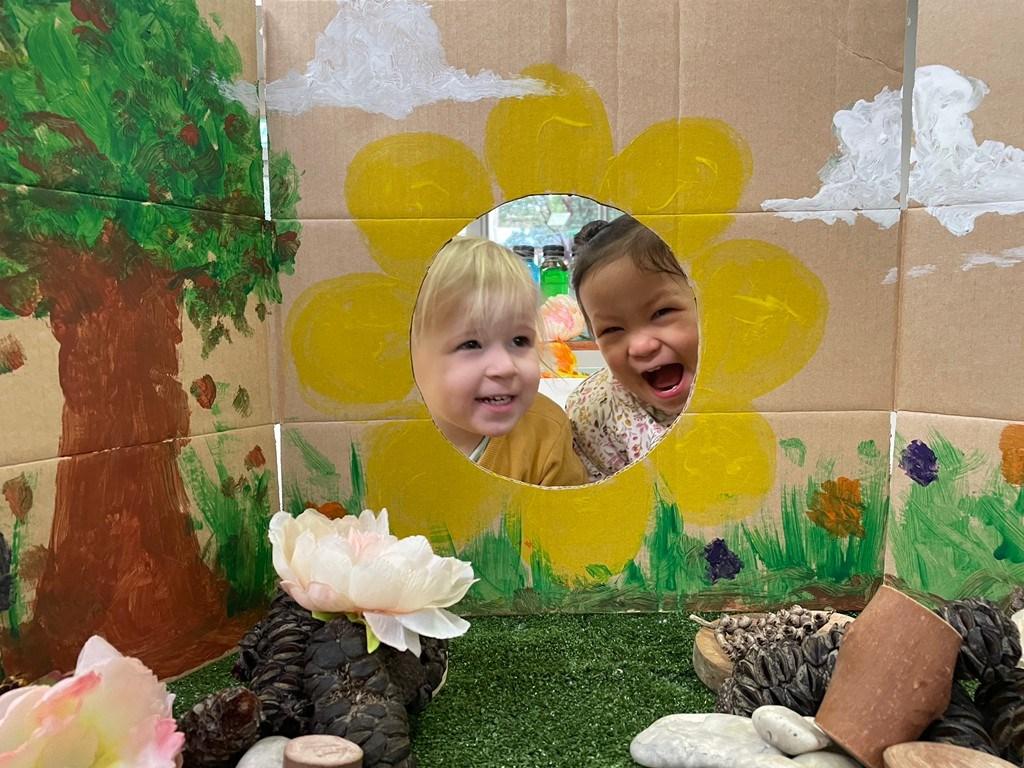
LINDFIELD NEWSLETTER
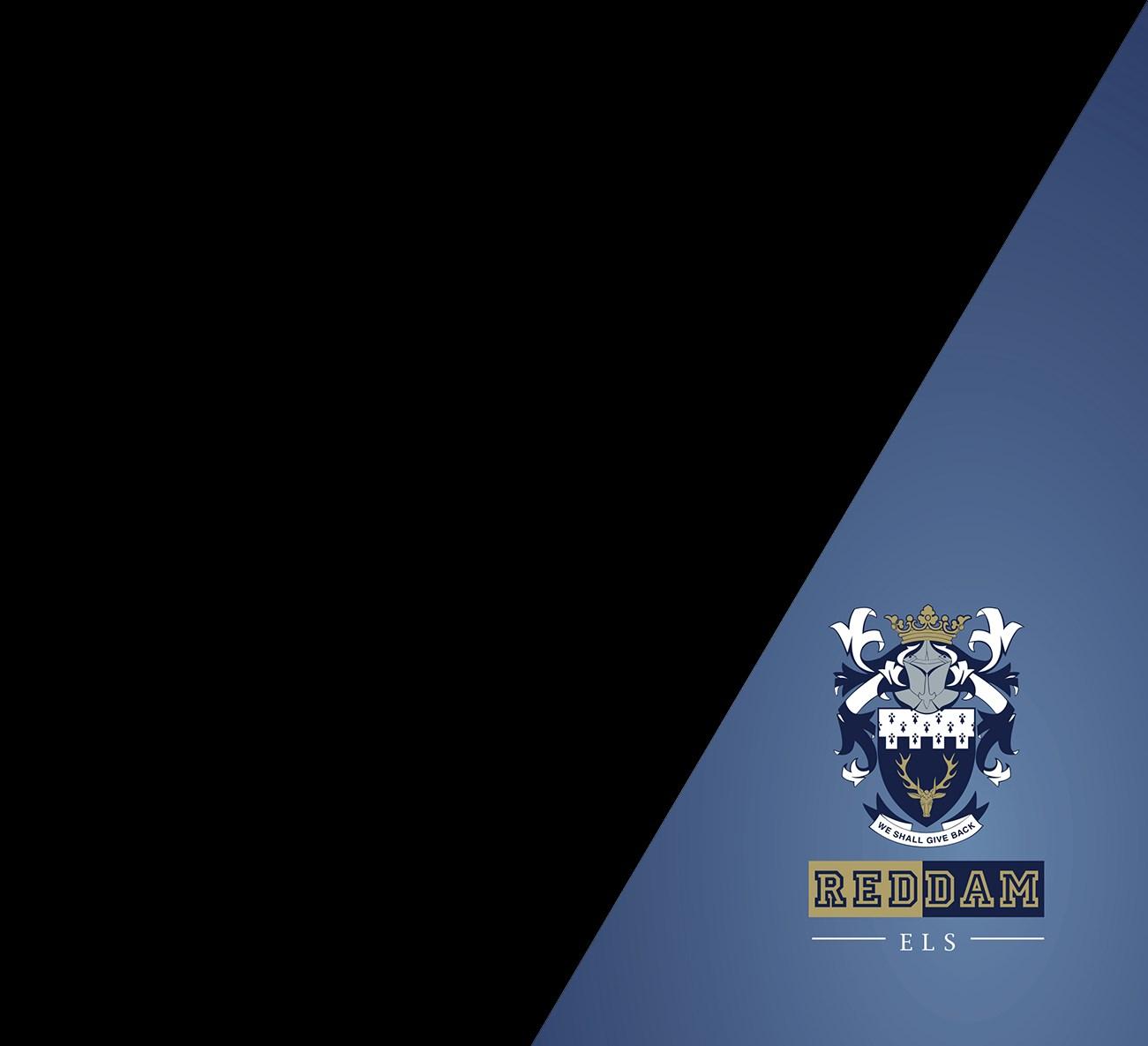
Principal’s Message
3rd March 2023
The term is flying past and the children and educators are busily investigating the current interest and projects. Recently we have introduced small groups into the children’s daily routine. This is where the children are grouped with one of the teachers to be involved with looking more closely at an interest/experience or participating in visual arts, dancing, singing or drama.
These small group times scaffold the large group that is held in the morning with the Core teacher. The team finds these small groups a great way to observe the children further and have more one on one discussions. This also assists the children’s voices to be heard and gain more confidence in their social and emotional skills when working with others. It also enhances the children’s sense of belonging with others.
“Belonging acknowledges children’s interdependence with others and the basis of relationships in defining identities. In Early Childhood, and throughout life, relationships are crucial to a sense of belonging. Belonging is central to being and becoming in that it shapes who children are and who they can become" - Early Years Learning Framework - Belonging, Being Becoming.
The team reflects daily on these small group experiences and documents the learning through written reflections. They may also document observations and learning stories to add to children’s portfolios. These may appear as individual or group style observations. Small group experiences provide an opportunity for educators to connect with children.
Principal’s Message Continued...
By Christine Irwin
To take the opportunity to scaffold children’s ideas, questions and play. Providing this time for educators to engage with small groups of children enhances their relationships not only with the children but also with the families where information can be exchanged about these important learning times. Australian Childrenʼs Education and Care Quality Authority notes that in quality Early Childhood services "Educators are actively engaged in childrenʼs learning and share decision-making with them. They use everyday interactions with children during play, routines, and ongoing projects to stimulate childrenʼs thinking and to enrich their learning (ACECQA, 2011, p. 124).

Please take the time to look at observations and photos on tapestry or have a chat with the team and your children about the group experiences that are being implemented every day. Over the past few weeks, I have observed the children cooking damper, mixing cupcakes, planting vegetables in the garden, planting flowers for our new table decorations, building a dinosaur world, dancing to the childrenʼs favourite songs, going for a walk to the park, building imaginary campfires, dehydrating fruits for afternoon tea and collecting items on a nature hunt - just to name a few.
Looking forward to chatting to you soon
Christine Irwin, Principal
2
Stage 1R
By Heather Gaskell
“If you trust play, you will not have to control your child’s development as much. Play will raise the child in ways you can never imagine.” (Vince Gowmon)
Hello our dear families and welcome to another run down of our fun week here at 1R Reddam Lindfield where we are continuing our exploration of Transport.
The children have been engaging in a vast array of experiences including our inclusion of people to the many types vehicles we have been previously investigating. This gives the children an opportunity to make connections between people and the vehicles they have been enjoying. They have absolutely loved every time we bring out the traffic light to include in our play, this has become a firm favourite of our dramatic play.
During the week at various times we have continued our work on our group project of creating our car. The children have participated in painting the cardboard box and painting paper plates to create the wheels. We will then create more items like headlights and a number plate for the car before putting it all together so the children can bump and beep around the room. We provide the children with a lot of loose part sensory experience's during the week, where there is no right or wrong way to play, its all about imagination. It is an enjoyable experience to watch the children play with these loose parts and see just what they do with them. It is especially nice to see them play and share them together. They use many skills during these sessions, their fine motor, imaginations, cognitive to social skills. Even free play is a great learning experience.
Another of the experiences we provided the children with this week was to include cardboard tunnels and flexi tubes with the cars. The object of this was to have your car travel down the tubes some of which were straight and others curved. This took some detective work from the children to work out which way to turn the tube, sideways or upside down. Some of the children experimented further by trying to see if the people would slide down the tubes. This activity provided the children with a wide spectrum of learning. They used their social skills to share items and turn taking when they wanted the same tunnel. This also helped them to expand their relationships with their peers. Some of the children observed then parallel played along side their friend mirroring what their friend was doing. This activity also encouraged the use of eye hand coordination along with dexterity to enable them to feed the cars into the tubes. Even cognitive skills were displayed by the children in their curiosity, persistence and problem solving to achieve their desires. We will continue to offer the children these tubes to further their skills and next time we will incorporate some ramps to see the cars fly down.
Next week we will continue our group project of building a cardboard car and see if we can finish it so the children can enjoy some dramatic play with it. We will also explore using construction vehicles in the mud and then enjoy giving them a huge bubble bath. Wishing all our families a safe weekend
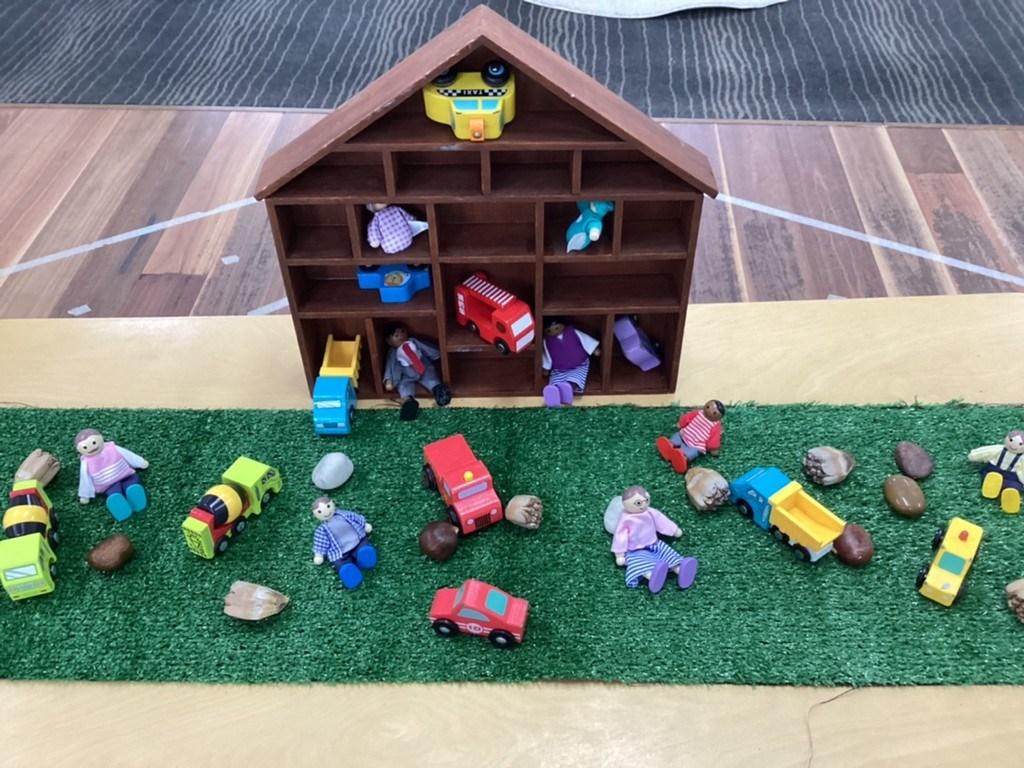
3
Stage 1R:

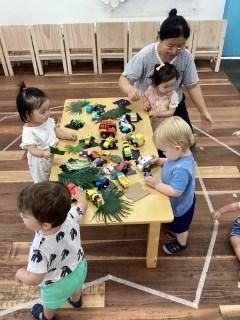
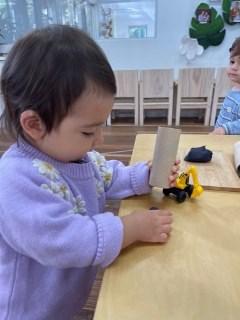


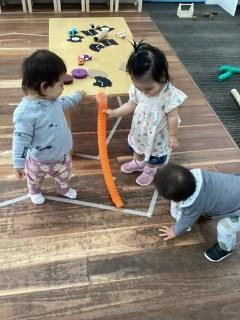
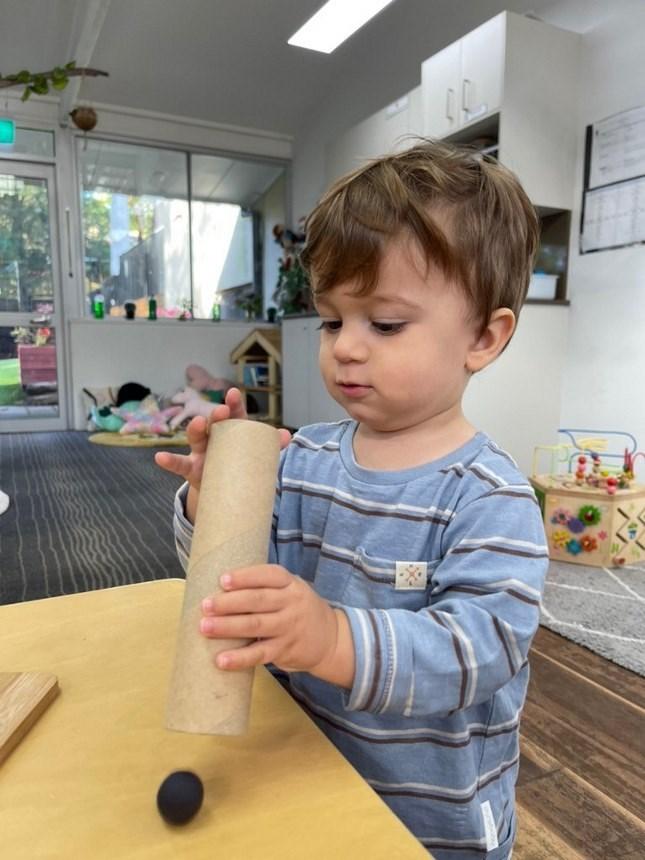
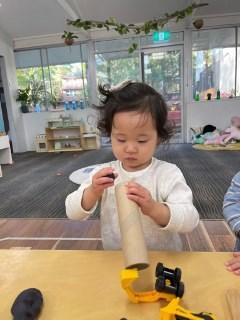
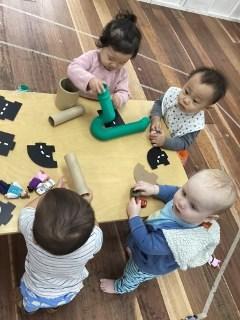
4
Stage 1R:

5
Stage 1E
By Hazel Whybrow
“Children learn as they play; most importantly, in play, children learn how to learn.”
(Fred Donaldson)
Over recent weeks the children have been very interested in song books. To explore this interest this week we read two new song books. Our first book was 'Up, Up, Up!' by Susan Reed. In this story we travelled up in a hot air balloon and looked down at the world below. We saw trains, fast race cars and people riding bikes. We then sailed over the sea in our hot air balloon. We watched as the hot air balloon was blown around by the cold air, and as the balloon floated higher and higher into the sky. We flew over a city with trucks, cars, boats, diggers and a crane. We also read 'A Hole in the Bottom of the Sea' by Jessica Law. In this book we encountered lots of different sea creatures including a shark, an eel, a crab, a squid and a snail. As we read, we noticed in the illustrations that the boats were at the top of the page, floating on the water. But on one of the pages a boat and sunk and become a shipwreck!
We have also continued to read some of our favourite books this week such as ‘We All Go Travelling By’ and ‘The Journey Home from Grandpa’s’. Whilst reading these we have been asking the children to locate specific vehicles on the page by asking them questions like ‘Where is the yellow school bus?’ and ‘Can anyone see the green boat?’. The children have all been excited to have their turn to spot a vehicle! As they do this they are demonstrating that they are meeting developmental milestones as they point to objects when named.
To continue to explore the children’s interest in diggers they have been provided with diggers and playdough at our provocation table. The children have been using the diggers to scoop the playdough, transport the playdough around the table and to create tyre tracks. As the children replicated the actions of diggers we have seen in books and videos over recent weeks they demonstrated that they can transfer knowledge from one setting to another. By playing with playdough they begin to use symbolic thinking, as they pretend the playdough is something else. This is an important part of cognitive development and by doing so children learn to express their ideas. To continue to encourage this loose parts such as rocks and sticks have been added to the provocation table for the children to explore.
At our sensory table the children have been enjoying scooping and pouring sand in the sand tray. They have been provided with a variety of spoons and scoops as well as containers to fill up. The children have demonstrated their fine motor skills and hand eye coordination as they carefully maneuver the spoons and scoops.
Home corner has also been very popular this week and many of the children have spent large amounts of time there. They have been making ‘hot cups of tea’ and distributing them to their educators and friends. Some children have been using the wooden knives and chopping boards to cut the wooden fruit into pieces. Others have been cooking and mixing in the frying pans before serving the food up to their friends. In our outdoor environment the children have enjoyed exploring boats at the water trough. They have been watching them float along the surface of the water and watching them rock when they splashed the water. We have been singing ‘Row, Row, Row your Boat’ as they play and encouraging them to replicate the actions from the song.
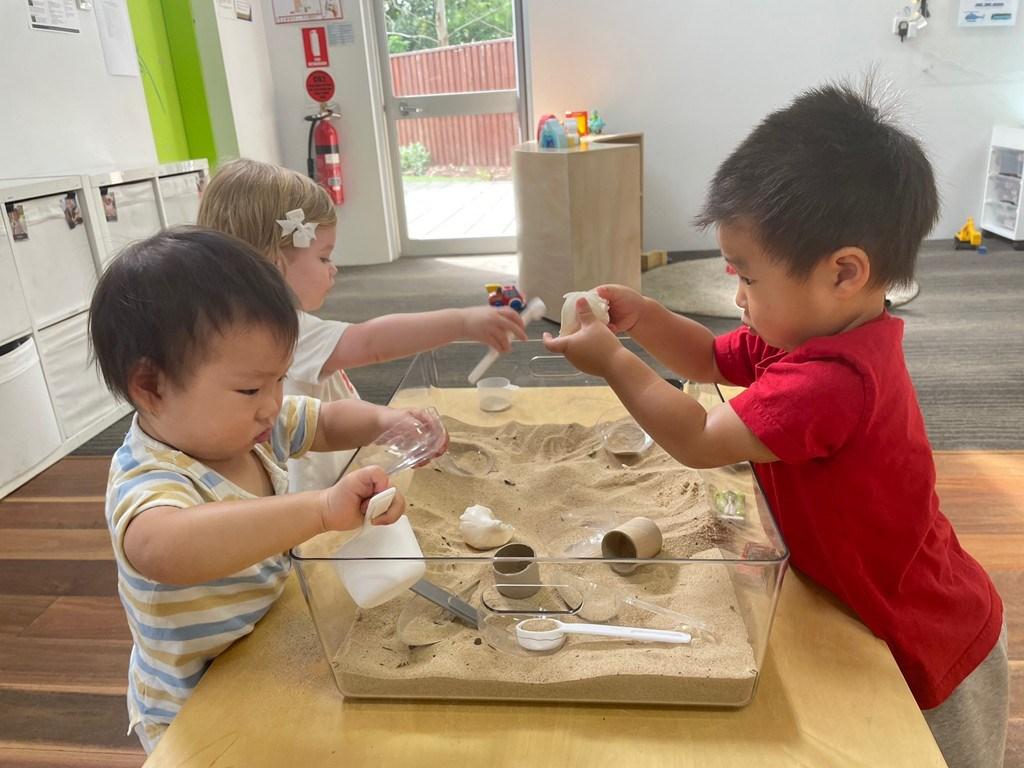
6
Stage 1E:



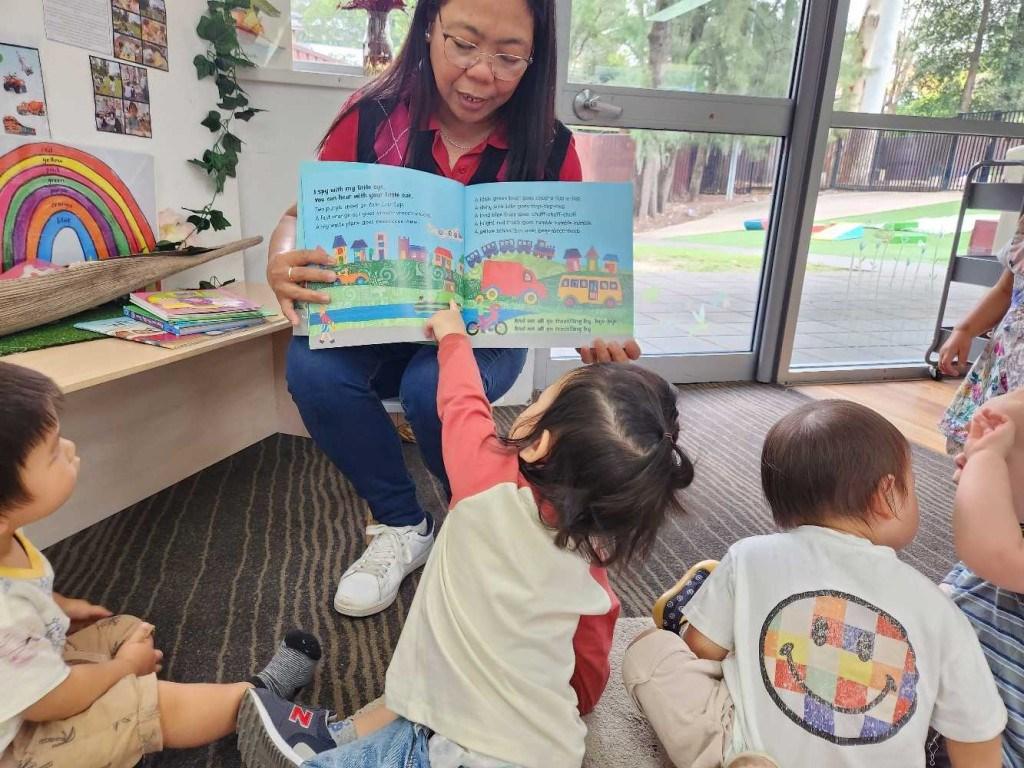

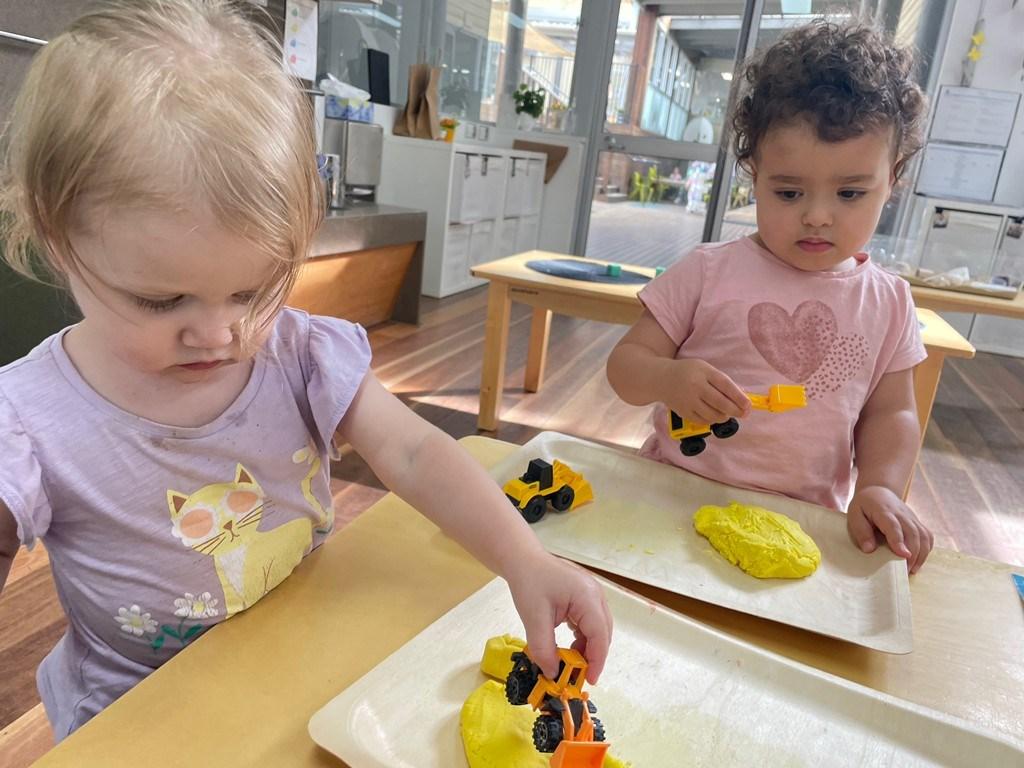
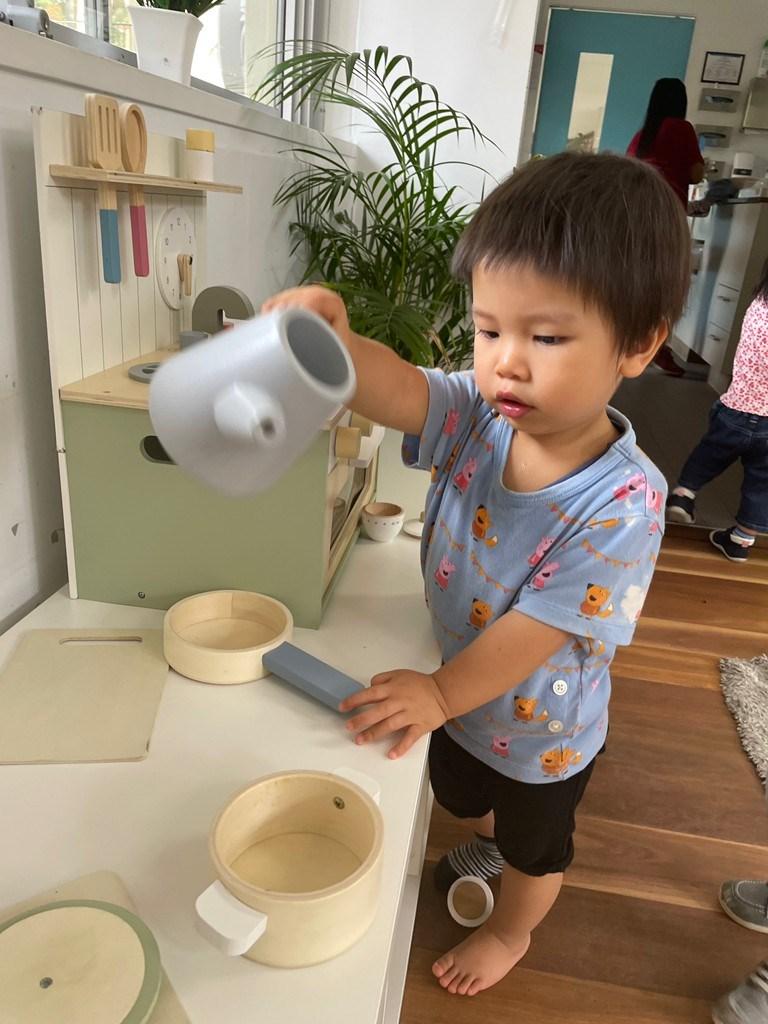
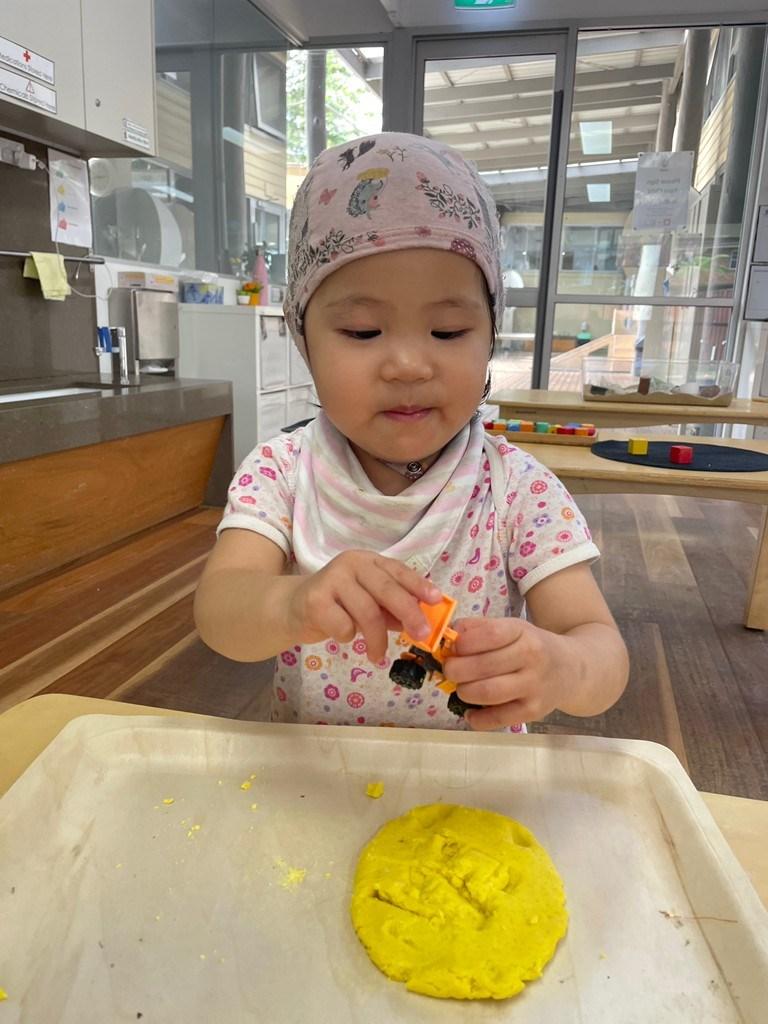

7
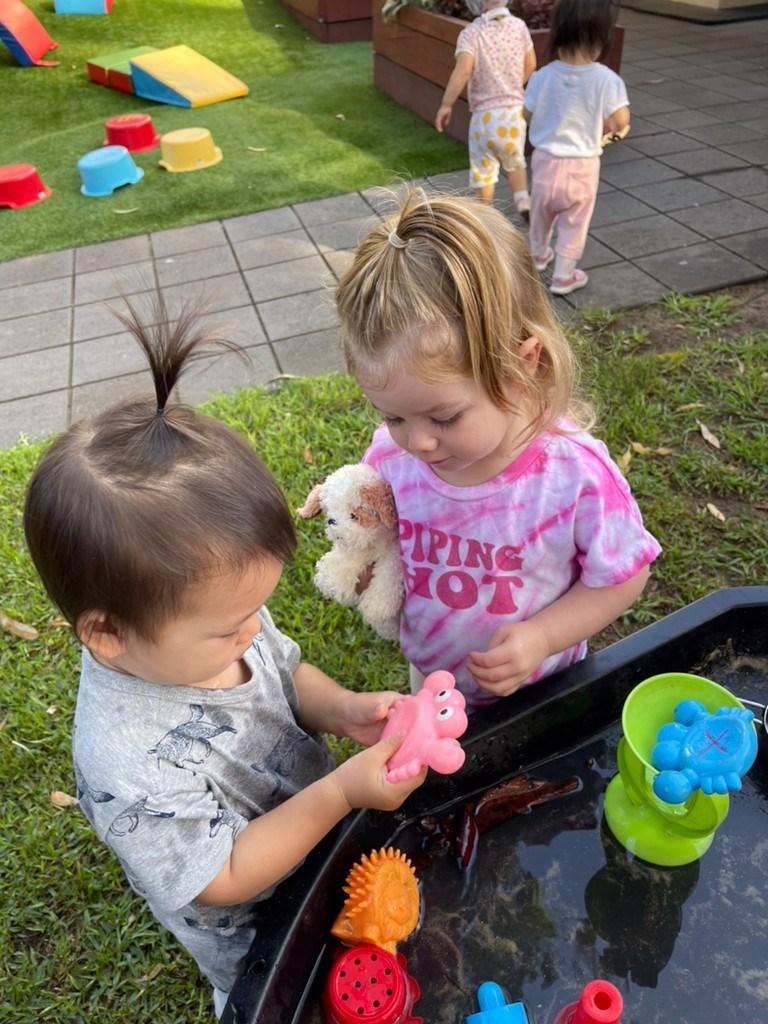
8
Stage 2R
By Vivian Truong
“If children feel safe, they can take risks, ask questions, make mistakes, learn to trust, share their feelings, and grow.” (Alfie Kohn)
Learning to identify and express feelings in a positive way helps children develop the skills they need to manage them appropriately and effectively. Talking about feelings and understanding how to name them are also important steps towards developing empathy. As part of our ‘I Belong’ provocation we decided to focus on My Emotions this week.

Children were encouraged to identify emotions in the photos of themselves and their peers by taking a photo at random and trying to copy the emotion they could recognise in the photo and name it. The role of 2R's teachers was to just encourage and support their young minds in their attempts. This experience helped the children to recognise, think and talk about emotions which is an important first step in the process of learning to manage emotions in socially aceptable ways.
Young children, in particular, may not have the words to describe how they’re feeling. To assist and enable 2R to find ways and words to help them express what’s going on inside, we decided to connect colours and emotions together. We took them on a journey of learning how to express their emotions and how different feelings may be shown or what they may feel like. We chose a different colour for each day of the week and encouraged children to understand the feelings of sadness (blue), anger (red), happiness (yellow), calm (green), mixed up or confused (rainbow), and that sweet-pink-feeling of love. These colourful learning experiences throughout the week helped them begin to develop an emotionally expressive language as they played. In addition to helping label and identify their feelings, these experiences each day helped them see that emotions are fluid, and although we may feel sad or angry one day, that feeling is temporary.
We hope you all have a lovely weekend!
2R Team
9
Stage 2R:

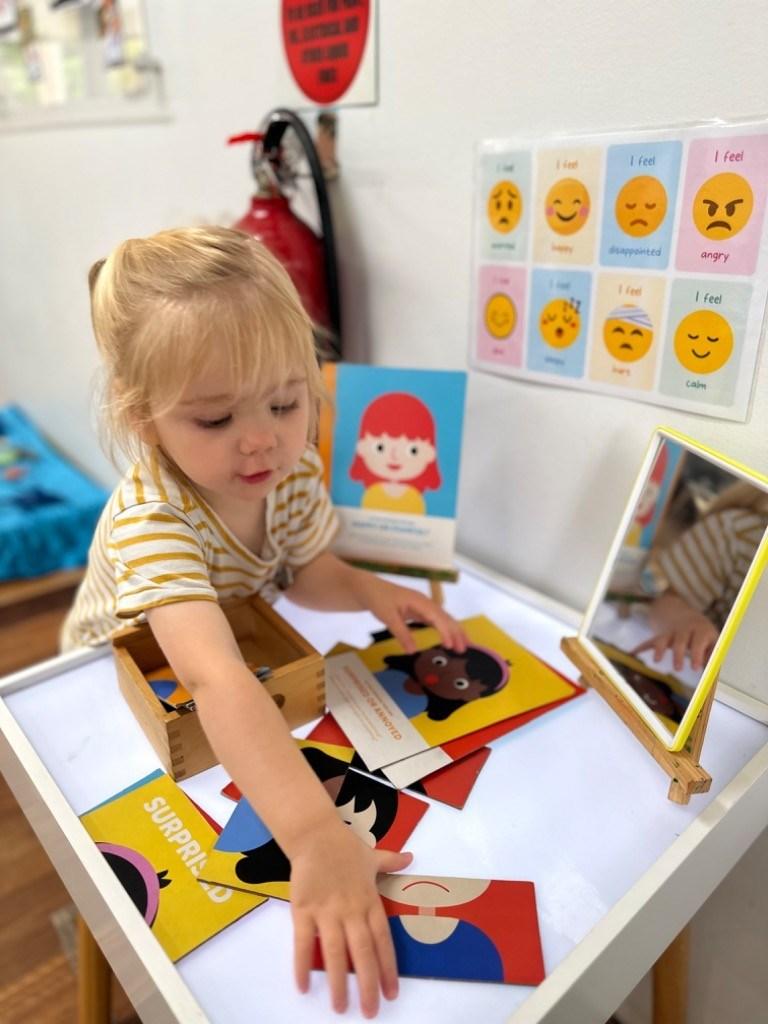
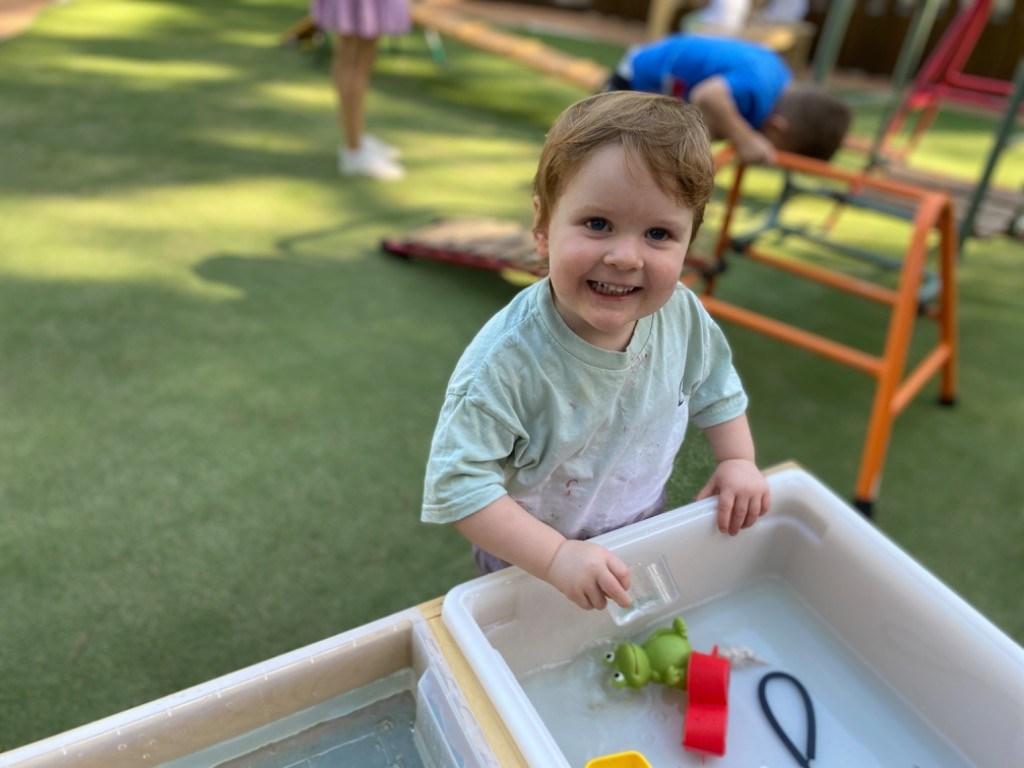
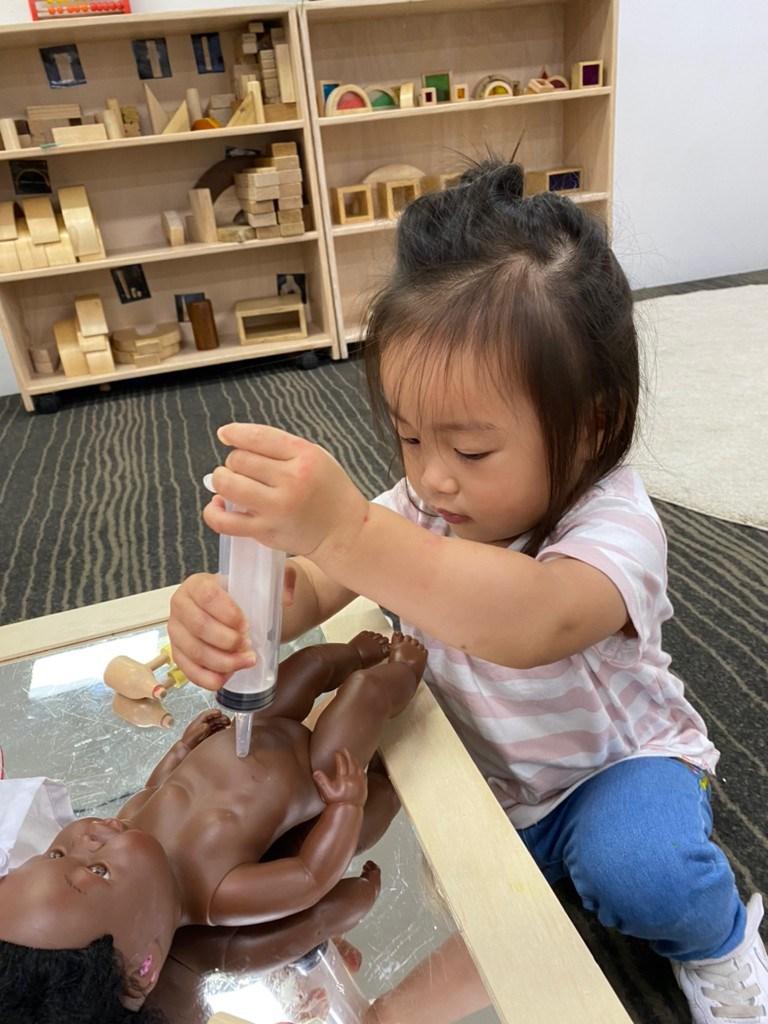
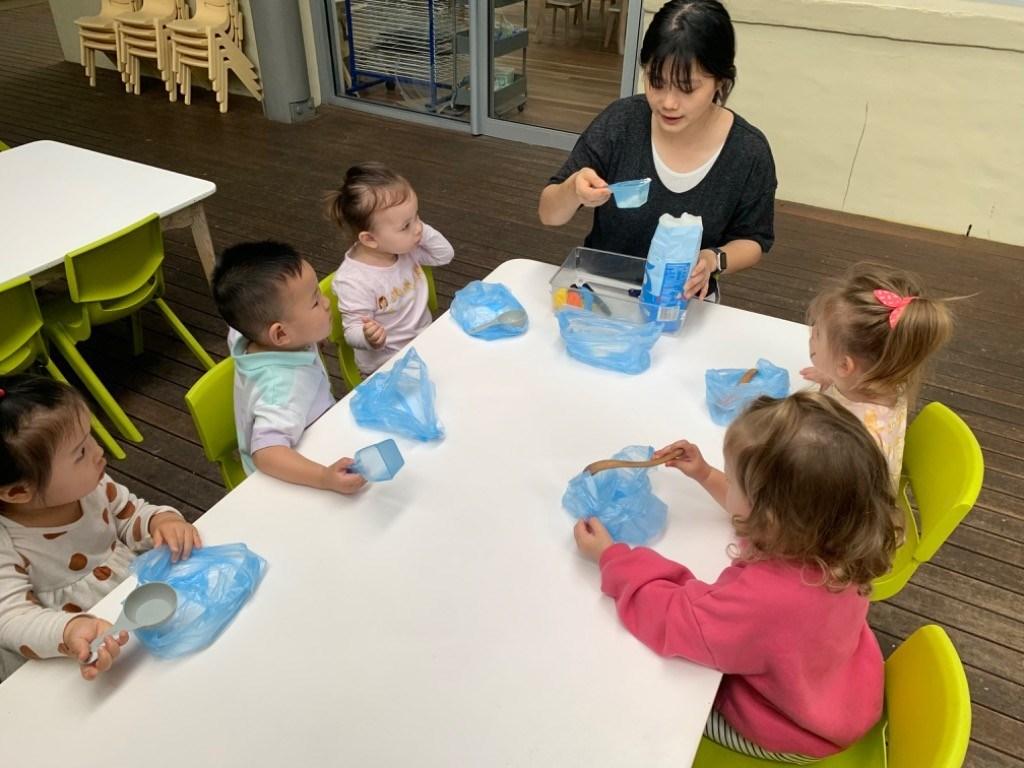

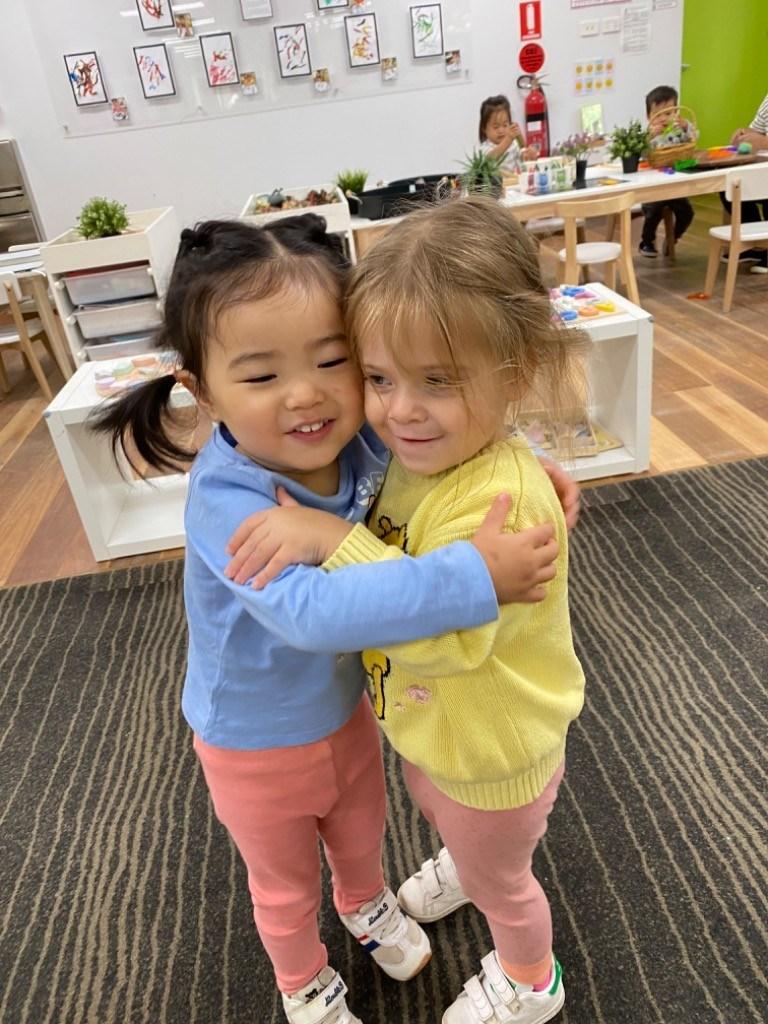
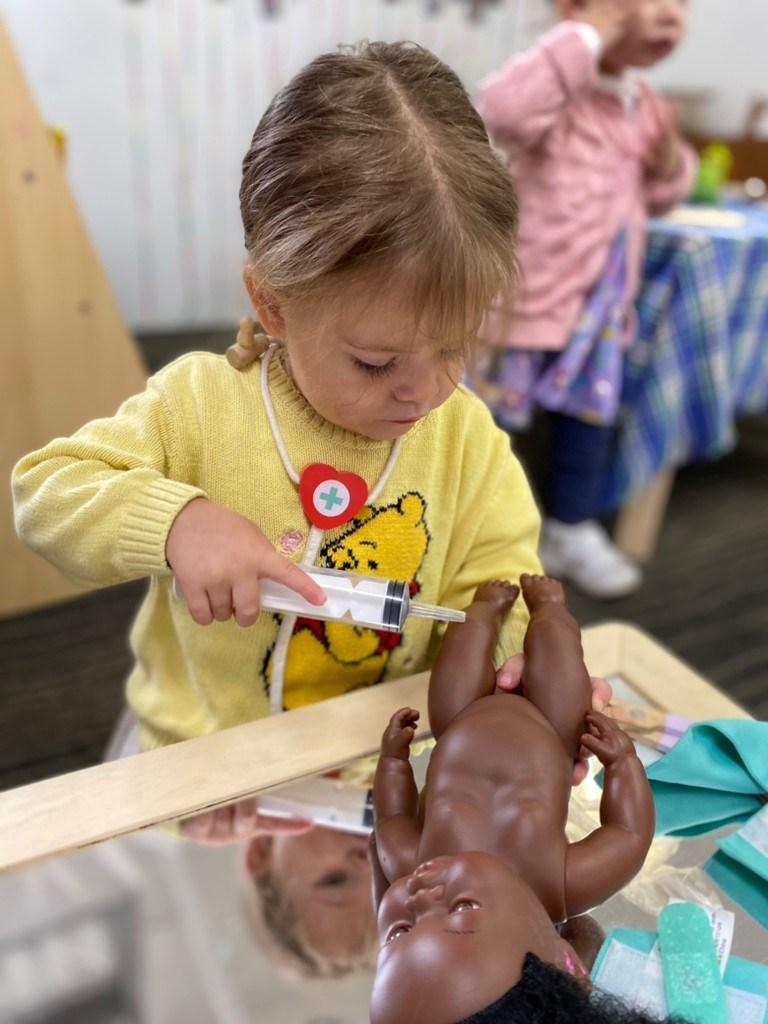
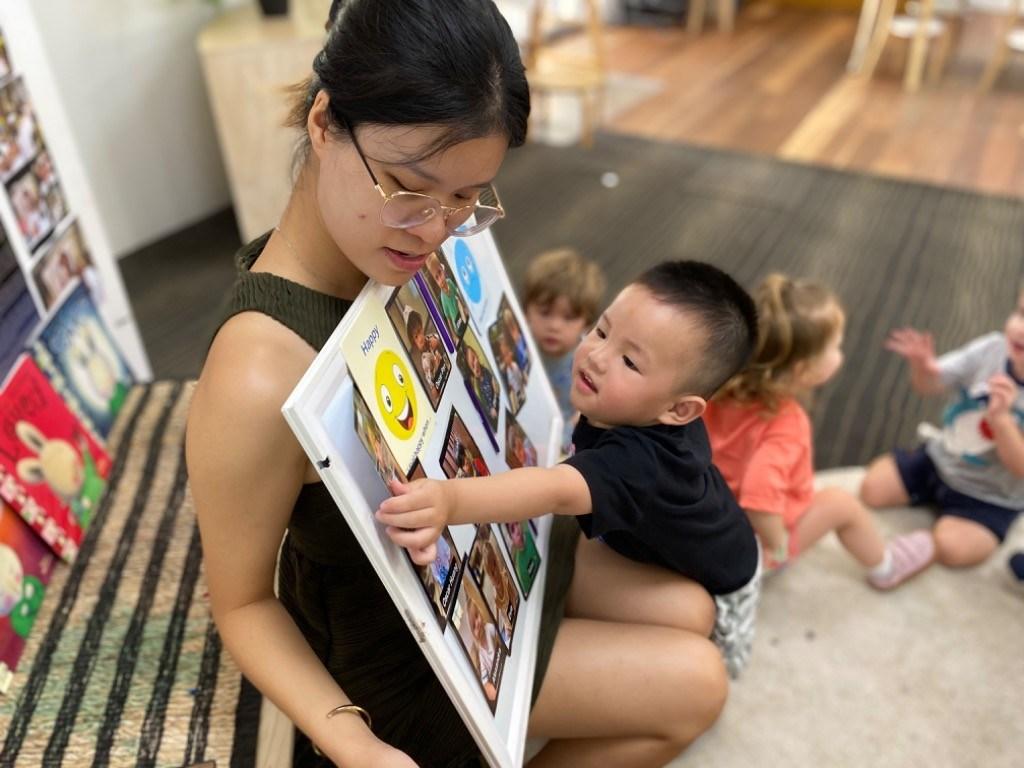
10
Stage 2R:
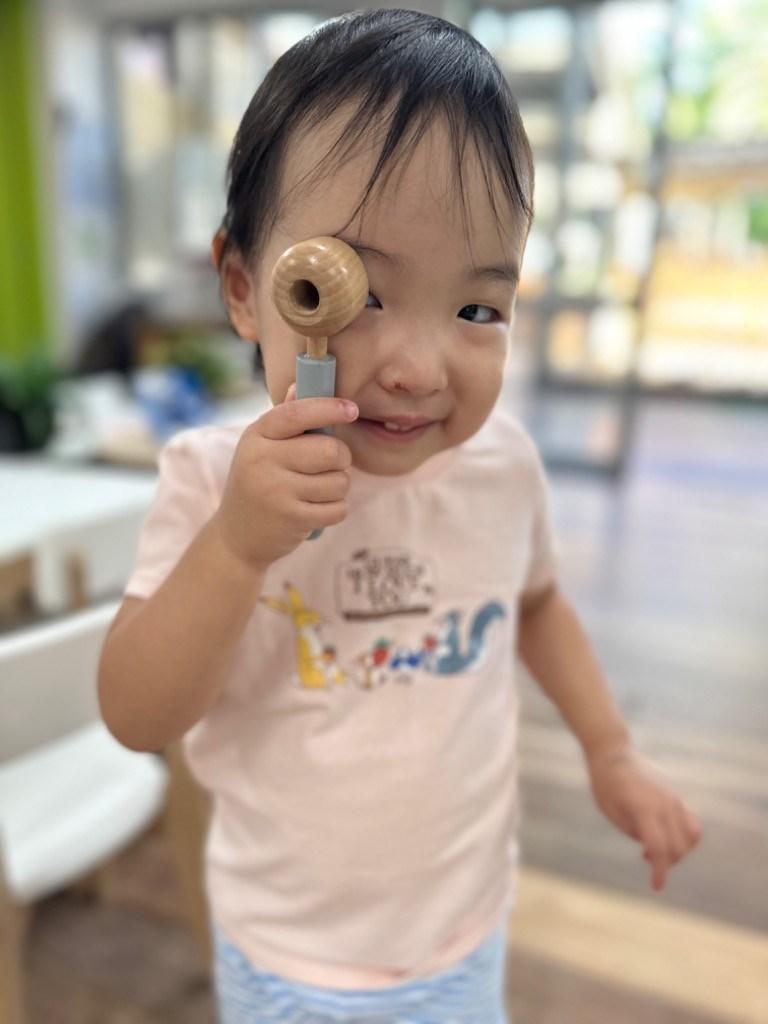
11
By Mia Doan
Childhood is a time to be, seek and make meaning of the world. Children’s identities, knowledge, understandings, capacities, skills and relationships are shaped by environmental settings, holistic educational programs and play-based learning experiences that may stimulate all areas of children’s learning, development, and well-being. In week 4, the children were invited to bring in their favourite books and share them with the class.
During the shared-reading experience, we continued to engage in two main literary genres: narrative and informational texts. Reading and listening to different literary genres affords their comprehension skills and builds critical content knowledge and vocabulary. One of the 2E children’s favourite books of the week was White Rabbit's Colour by Alan Baker. The facts embedded in this narrative book informed 2E young scientists about the concept of colours in a fun and engaging way. Importantly, interacting with children while reading helps them to understand and make meanings from visual images. After reading a book, Miss Mia invited the children to join in a hands-on experiment. We tested the theories of the book and put them into practice. Our friends used pipettes to transfer the primary watercolours into small containers and mixed them. The children highly focused on the task to make sure that the watercolour was transferred with the same ratio.
In another small learning group, Miss Chloe continued to nurture the children’s home language by inviting them to a Mandarin book reading session. Miss Chloe shared with the children a story named Cloud Bread by Baek Hee Na. On a rainy day, the kitten brothers found a white cloud on the tree. After they took the white cloud home, the cat's mother made the white cloud into bread. A very unexpected thing happened. After eating the bread made by clouds, everyone flew up! After reading the story, Miss Chloe asked everyone “If you eat cloud bread now, where do you want to fly to?"
Kylie replied immediately “Fly to daddy!”
Sierra followed “I want to see my daddy too” Hayden said, “I want to go home.”
Hamish answered “Mommy.”
Landon happily shared “to Daddy and Mummy!!”
The highlight of this week was the excursion to the park. We had a picnic at the park one day and music group time another day. The children enjoyed their trips to the park as there was a construction site opposite where we played. They sang the Excavator song and had a closer look by standing behind the fence. They all wondered why this orange excavator was so small. The children then shifted their interest to the playground. They all took turns and waited for their turns to be on the slide, swing and seesaw. Sliding down a big slide, sitting on the big swing and climbing on a wobbly seesaw made the children proud of themselves for taking big challenges and overcoming their fears. Importantly, spending time in nature also fosters the children's attention skills and relaxation. Sitting down on the grass, feeling the gentle breeze, enjoying the sunshine, touching little sticks, and collecting leaves are small activities but have great impacts on their learning journey in life as young children are learning through their senses.
Have a fantastic weekend, Mia, Chloe, Xanthe, Shandie, Alisha Lizzie, Mary and Lucy

Stage 2E
“A book is a gift you can open again and again.” (Garrison Keillor)
Stage 2E:
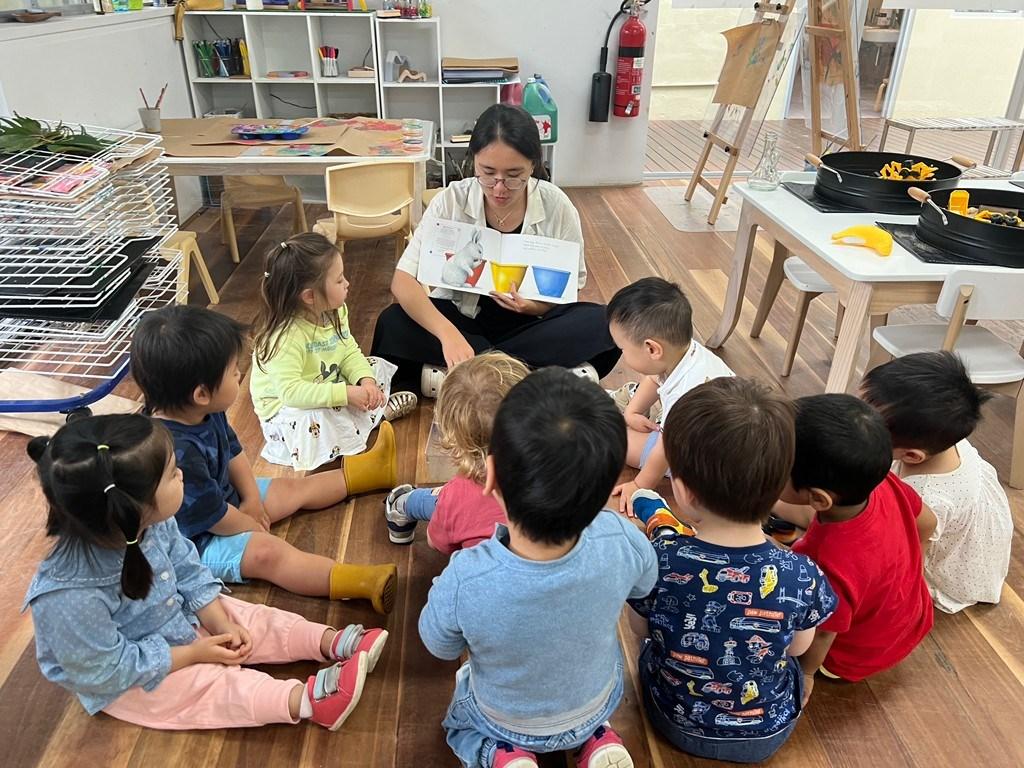
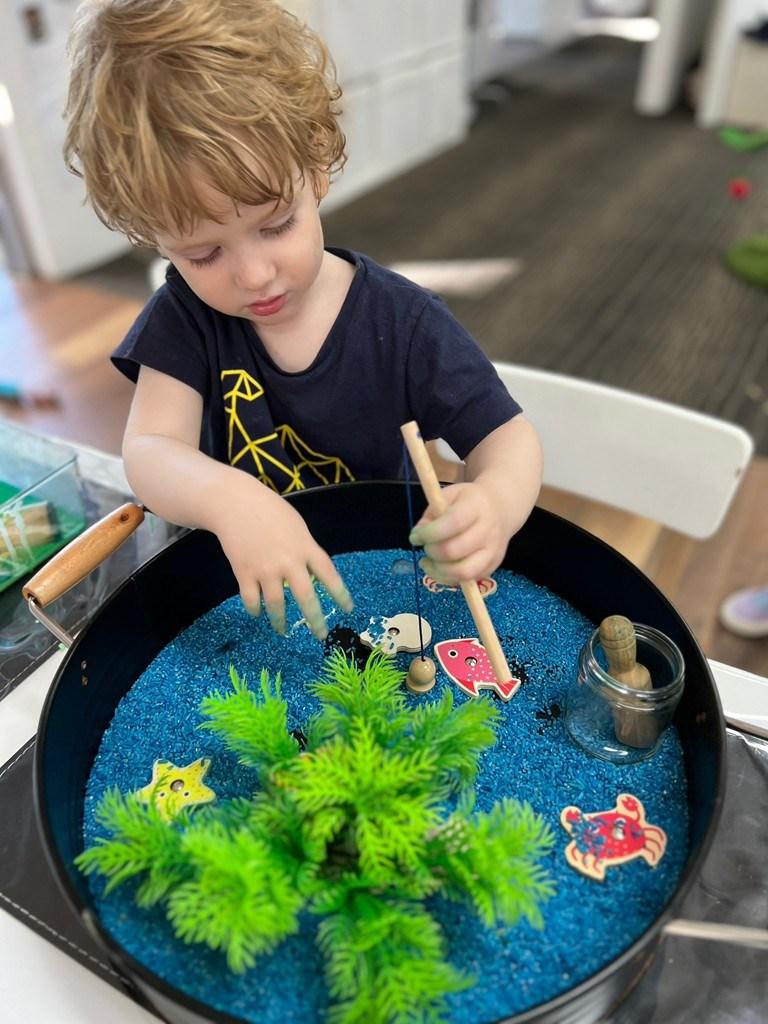


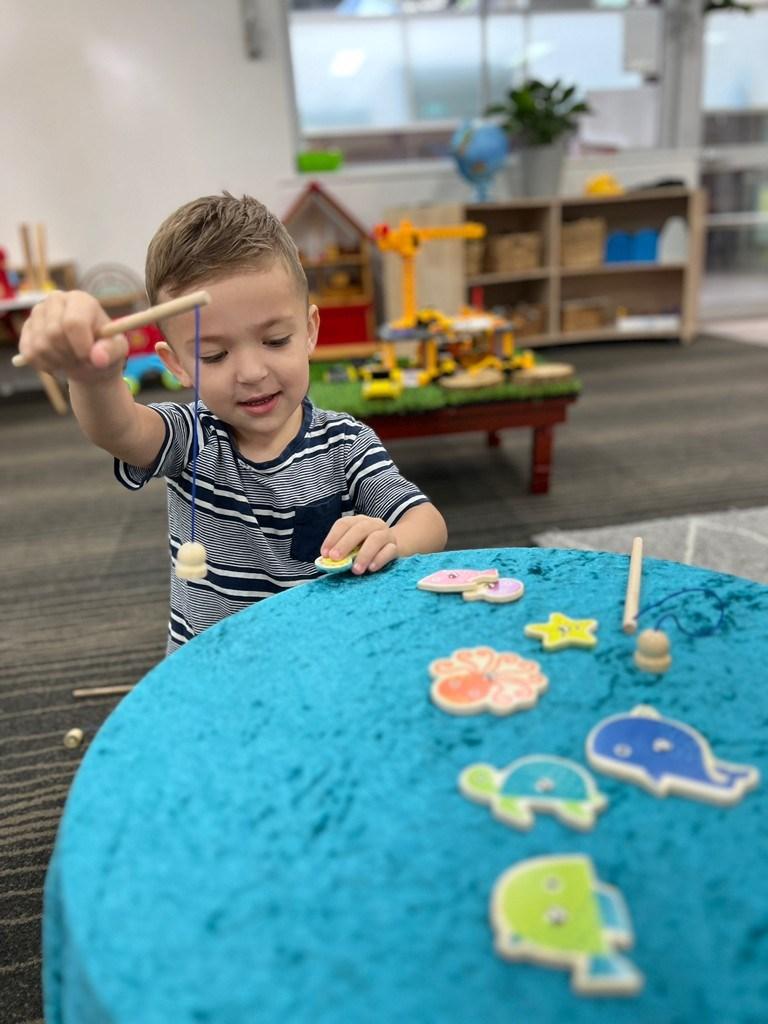


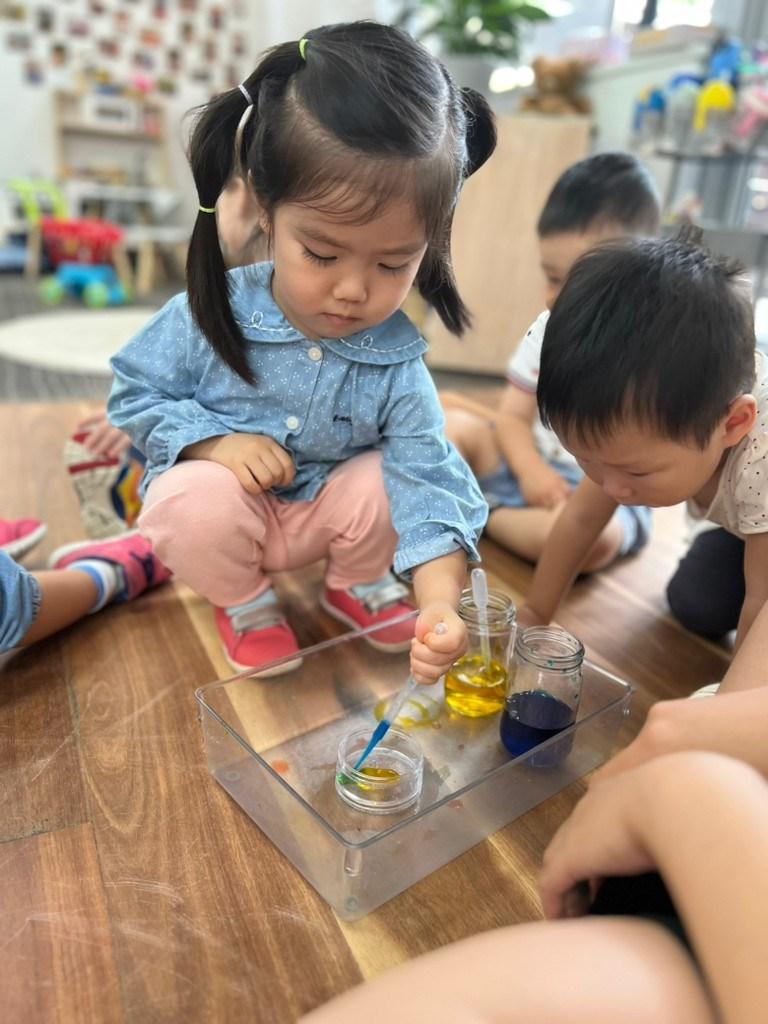
13
Stage 2E:
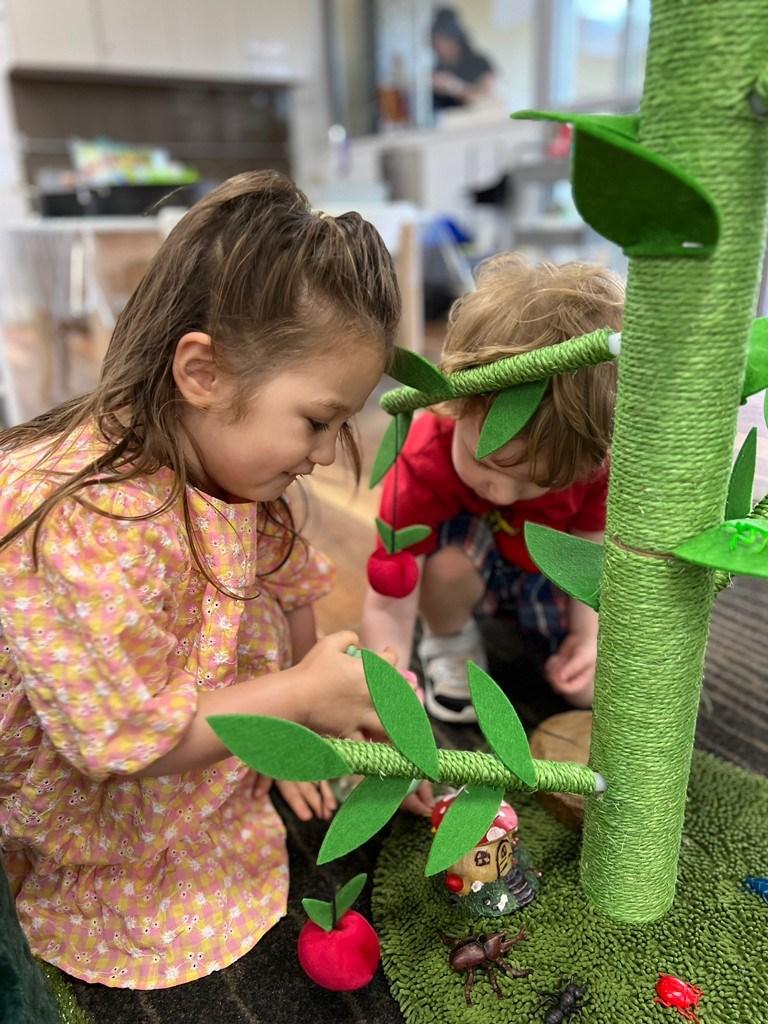
14
Stage 3R
By Grace Nolan
"Children learn lifetime skills through practising basic maths skills such as counting, weighing, measuring, tracking time; they also gain social skills by working together and communicating in the kitchen.” (MacFarland, 2019)
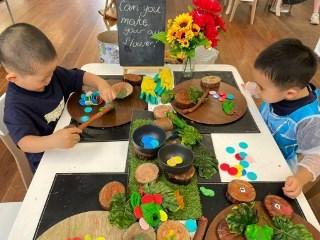
This week the children were introduced to another concept that layers onto previous sorting and categorising concepts explored last week. Using swimming and flying dinosaur flash cards, the children were invited to sort the dinosaurs into ‘Sky, land & ocean’ categories. The children’s sorting and understanding of characteristics was interesting as some children were able to link wings to ‘Sky’ and ‘Flippers’ to ocean, however, most children focused on counting the legs and feet of the dinosaurs. Seeing the children counting the legs/feet and discussing whether or not it was ‘Bipedal’ or ‘Quadrupedal’ really demonstrated that the children have taken onboard this concept and are now able to transfer that knowledge from one context to another. This was a great example of Piaget’s theory that children learn best through manipulation and repeated experiences. We will continue to revisit ‘flying and swimming’ dinosaur concepts in the coming week.
As the ‘Flower Playdough’ table has been quite popular and the children’s interest in our garden project has still been strong. This week we looked at the Basil plant and saw that small roots were sprouting from the bottom. This triggered a great conversation regarding the use of roots, the importance of water and where to go from there. After this conversation, the children were able to have a smell of the basil, with many children commenting how “Yummy” it smelt. The children then took turns to pick and cut the Basil leaves, measure out olive oil, cheese and mix it together to make our very own ‘pesto’. The children loved making this and enjoyed eating it even more!
In our small groups the children have been tapping into the creativity to create calming sensory jars that reflect their favourite flowers. After having a look at the different kinds of flowers, the children made coloured water and added baby oil as well as glitter. The children then put on their ‘Logicalmathematical’ (Gardner, 1978) perspective as the children hypothesised why the oil and water wouldn’t mix and why.
Next week we look at the different parts of flowers and learn new concepts surrounding dinosaurs. Grace, Jenny & Charity.
15
Stage 3R:


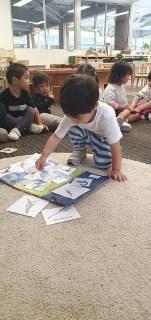

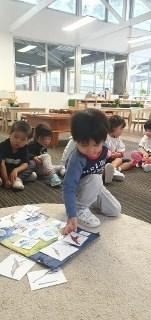

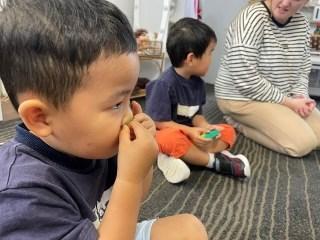
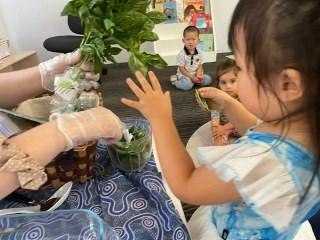

16
Stage 3R:
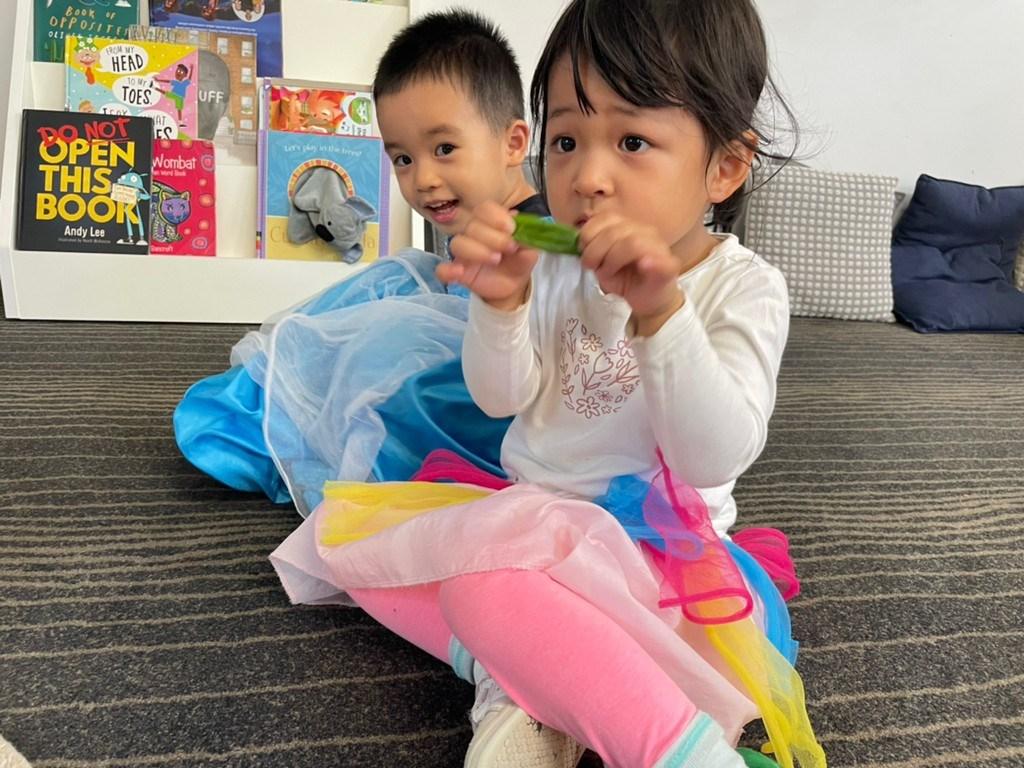
17
Stage 3E
By Laura Ashcroft
“Logic will take you from A to B, imagination will take you everywhere”- (Albert Einstein)
During Week 4, the children have continued their investigation of using their senses in many different ways, by exploring with their sense of smell. This has allowed them to think more critically about their environments, and take into consideration different elements such as texture, colour, smell and taste. The children have enjoyed exploring their outdoor environments, where they could smell different things such as the flowers, plants and flowers, as well as starting to make connections between things they have felt or smelt at home or in other places such as a restaurant or supermarket. The children also shared their enjoyment for using the recycled materials where they could use their emerging sensory skills and capabilities to explore musical instruments. This allowed them to use the recycled instruments in different ways where they could shake them up high, down low and side to side.
Some of the children were given the opportunity to engage in various literacy games where they could try and match different pictures to their corresponding letters, and vice versa. This allowed them to use their emerging pre-literacy skills, attempt to sound out different vowels and recognise the sound of each animal and as well enhance their letter-sound relationships. The children also continued to use loose part materials, where they could arrange, categorise and order numbers from 1-10. This allowed them to show their understanding of numeracy and identify what each amount looked like and represents with concrete materials and objects.
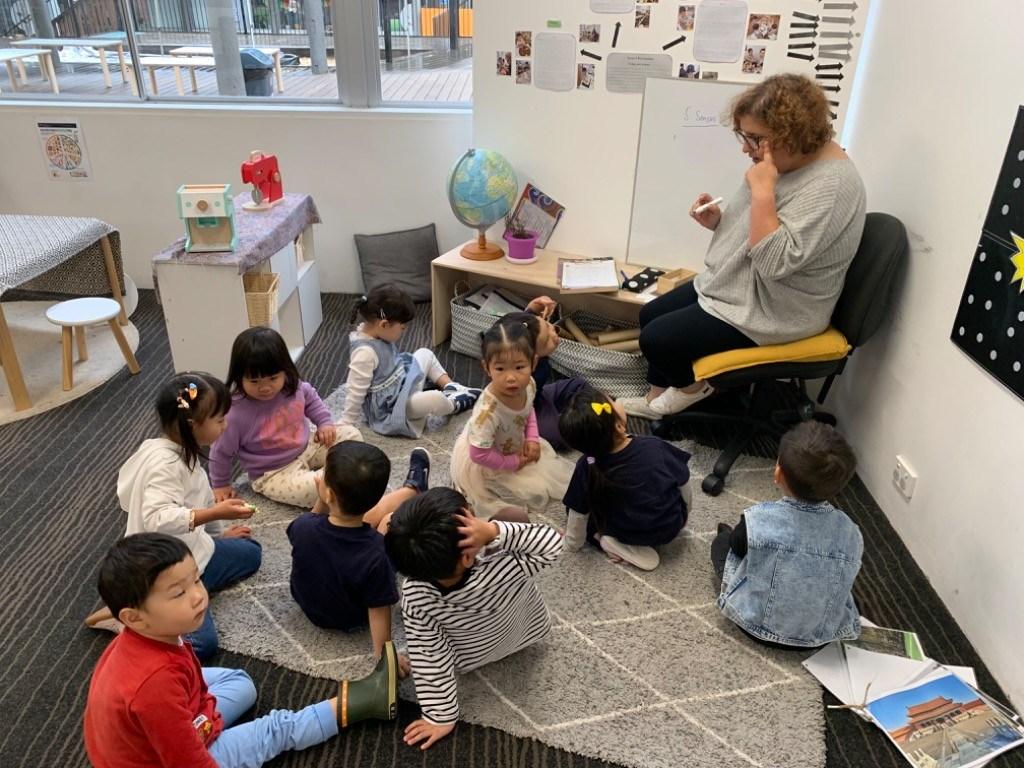
Towards the end of the week the children started to share their humour and happiness for free dancing, using creative movement and exploring their space by moving and dancing to different music. The children continue to engage with the creative arts where they could engage with drama, explore and act out different roles and scenarios from the story called, “We’re going on a bear hunt” The children seemed to enjoy swimming through a river, walking through mud, tip-toeing through a cave and running away from the bear back home!
We hope you all have a lovely weekend, Laura, Natalie & Kai
18
Stage 3E:
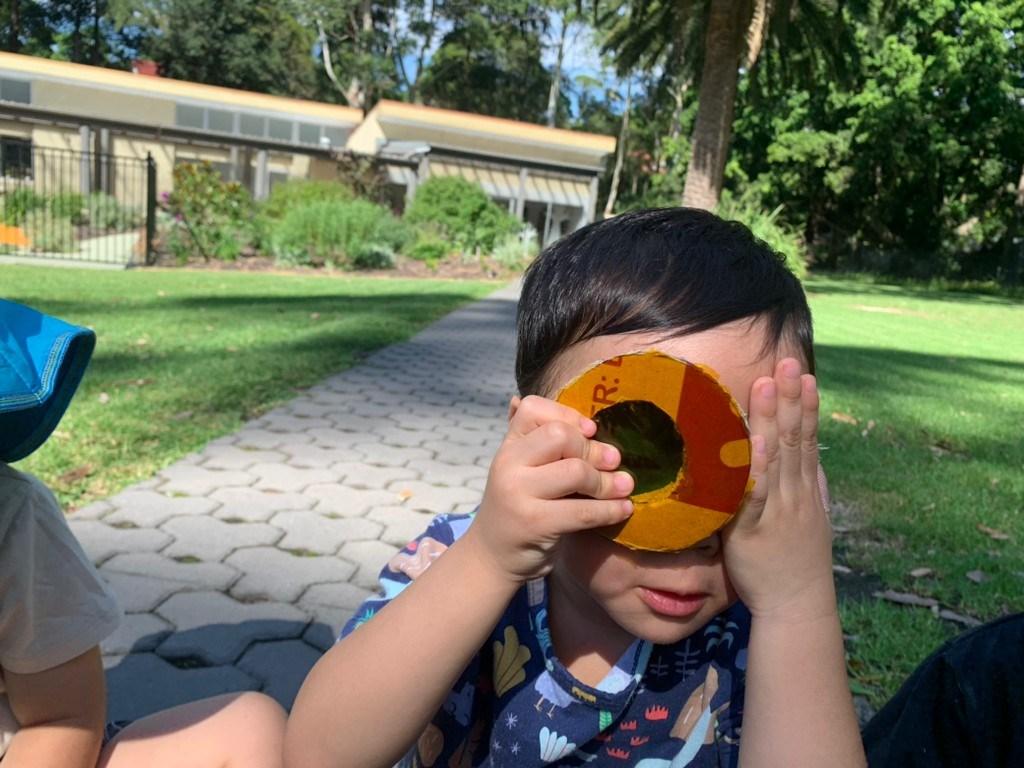
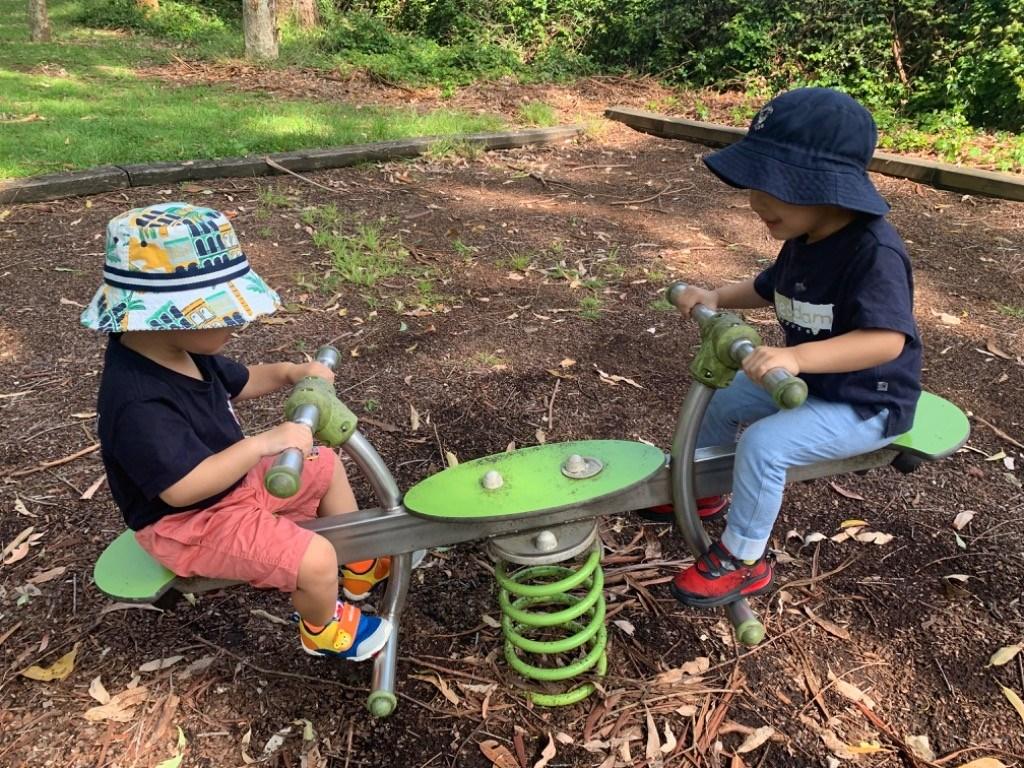
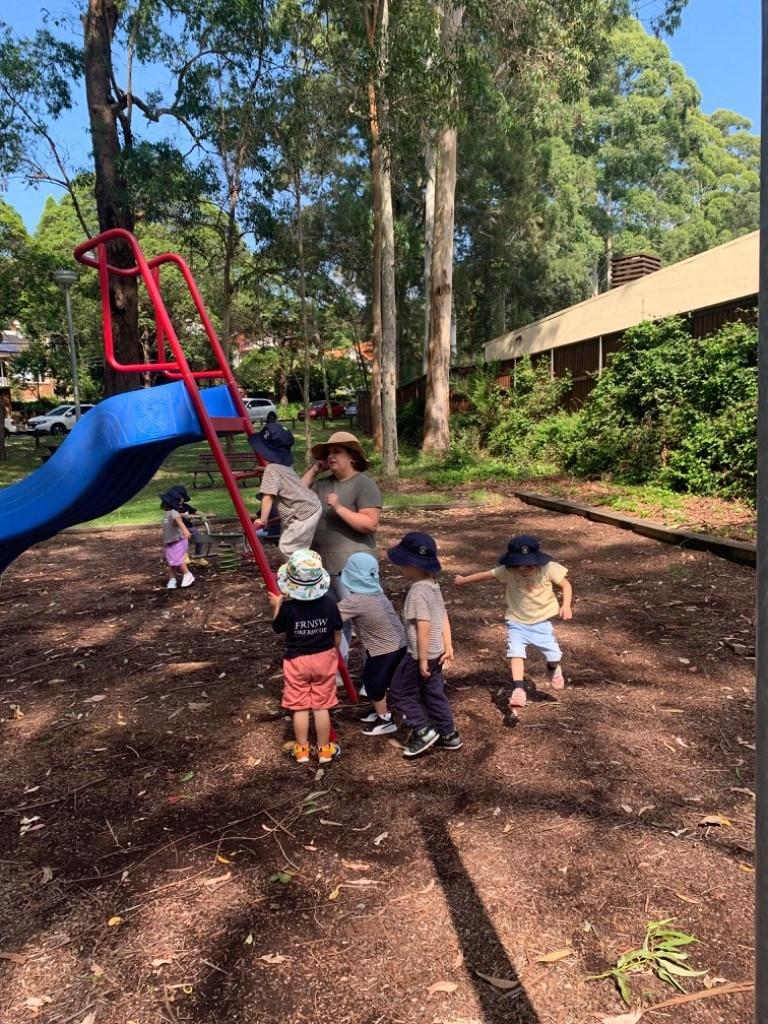

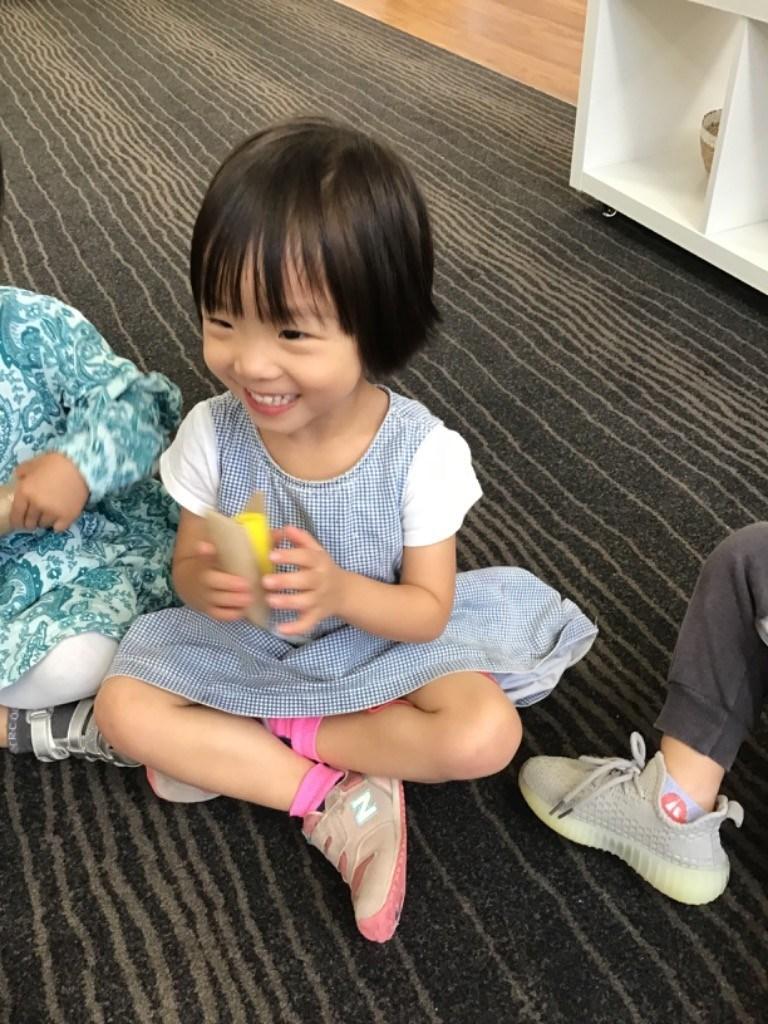
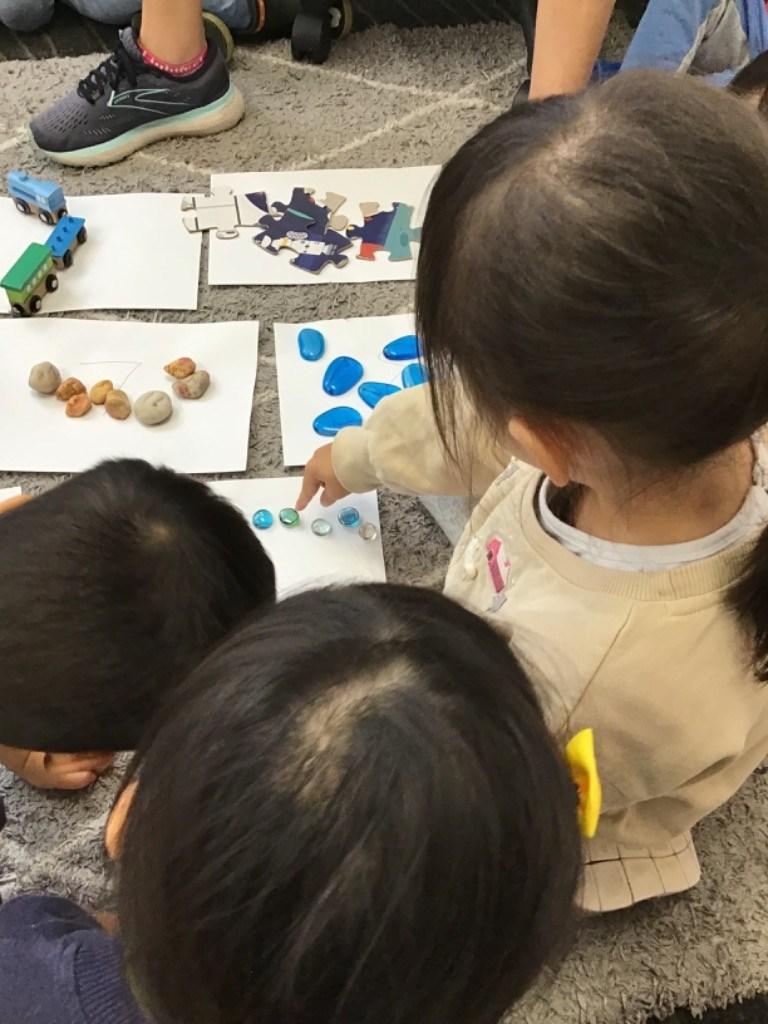
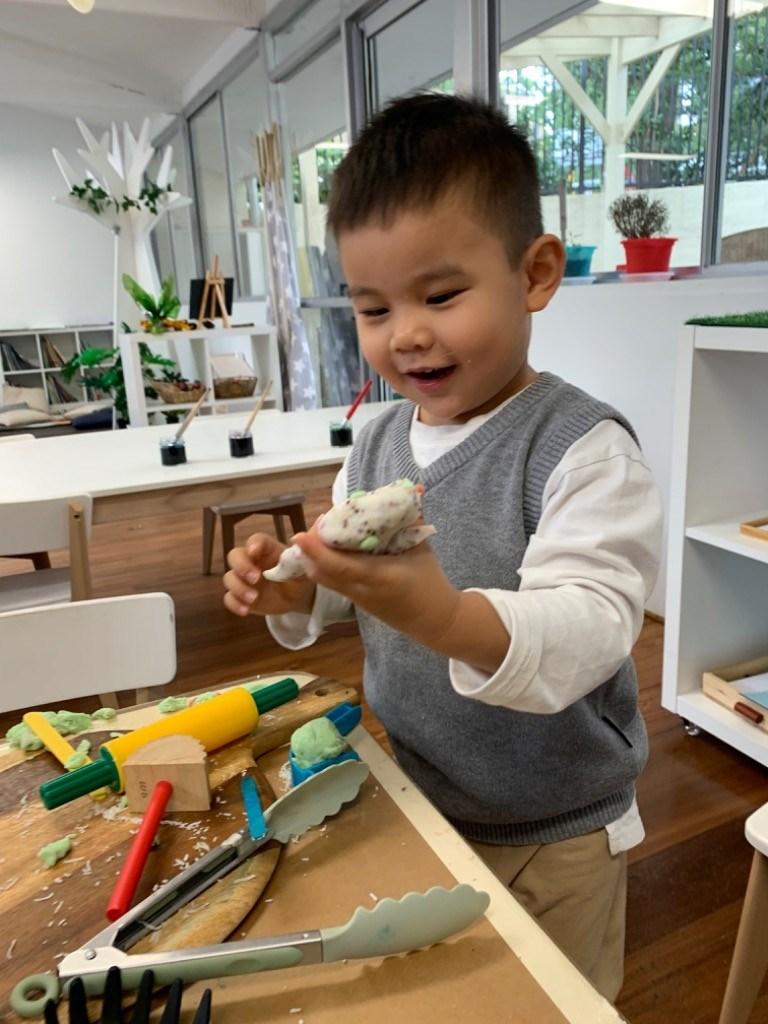

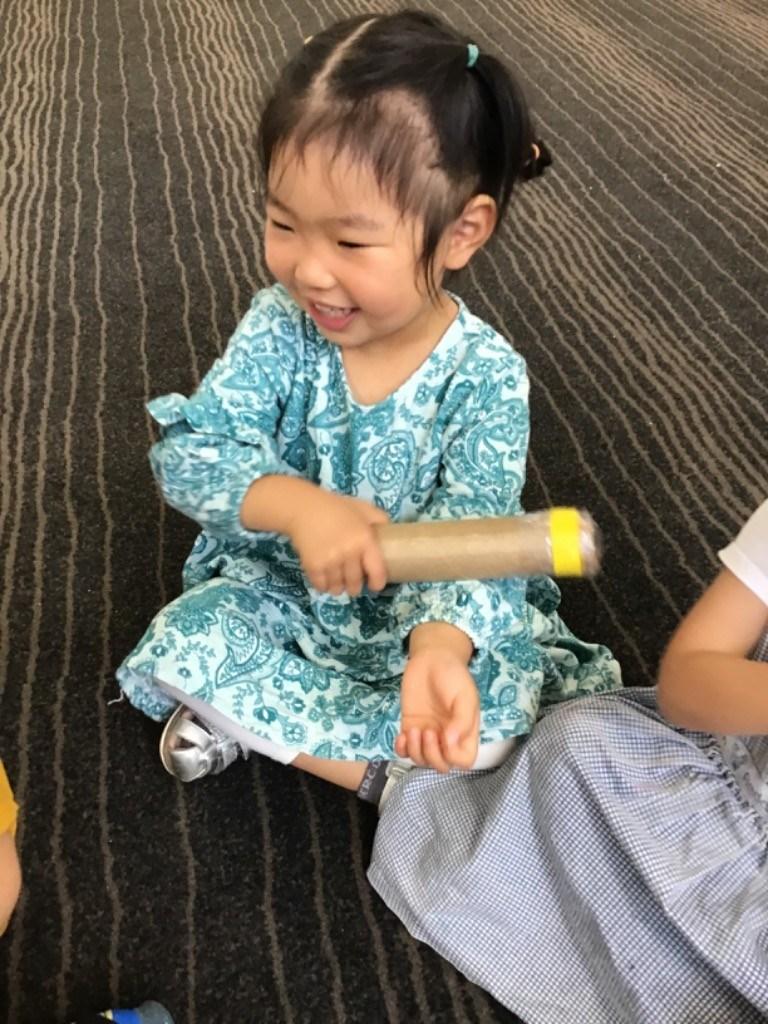
19
Stage 3E:

20
Stage 4R
By Amy Cunningham
This week in 4R, we continued to explore “Around The World”, however our focus shifted slightly. As Tuesday 21st February was International Mother Language Day, we spent some time exploring the world map and discussing the different languages that are spoken around the world. A few of our friends excitedly told us what countries their families came from and if they spoke another language at home. We learnt how to say hello in Mandarin, Bahasa Melayu, Thai, Italian and also using sign language (ASL). It was wonderful to see how eager the children were to share their home languages and also try to learn new words from different countries.
We read the book “Katie in London” and explored some famous sights of London such as Big Ben, Tower Bridge, The London Eye, Buckingham Palace, Saint Paul’s Cathedral and Trafalgar Square. The children thought Tower Bridge was amazing the way the road lifted up to let boats travel underneath it. Since the children were unsure of where London was, we went back to our world map to see if we could find it. Angus noticed the picture of Big Ben on the map and told us that must be where London is. He also noted that it was very far away from Australia and must take a long time to get there in a plane. This led to a group brainstorm on the different ways you could travel around the world. The children had some wonderful ideas, listing all the different modes of transport they knew. Following this discussion, the children started to incorporate more transportation into their play with vigour. We saw lots of role play games where buses, trains or planes were created using chairs and boxes, and tickets were made for the passengers to board. Miss Margaret took the children’s interest in cars to the next level by leading an investigation into friction and velocity. We constructed ramps and tested different surfaces on the ramps by adding Astro turf, felt and paper to the top. Next we tested elevating the ramp to see if that made the cars travel at a faster speed. This experience led to some wonderful conversations and it was great to hear the children posing questions, making predictions and discussing the results.
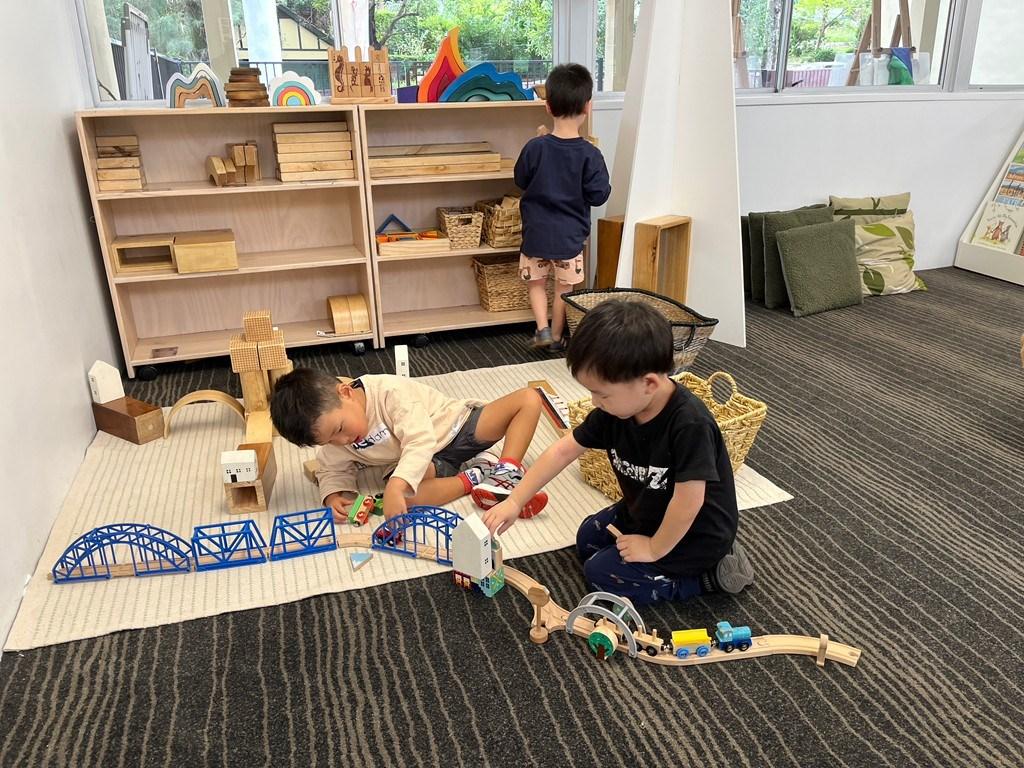
We hope you have a lovely weekend ahead and look forward to seeing you all next week.
Warm wishes,
Amy, Callum and Margaret
21
Stage 4R:
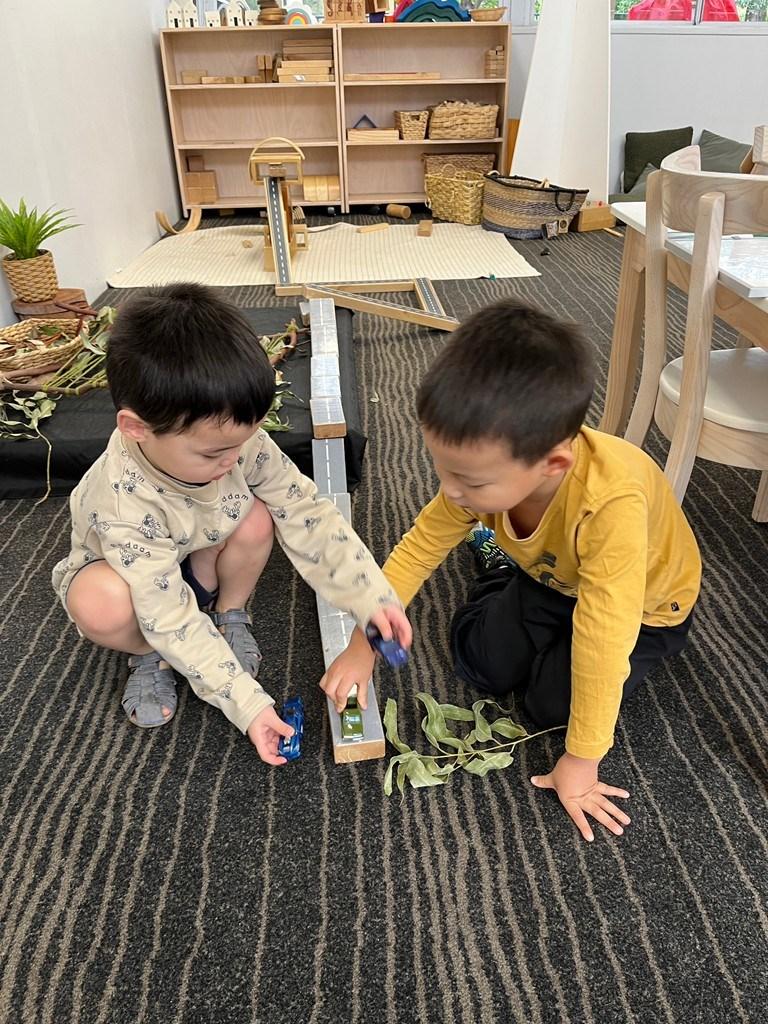

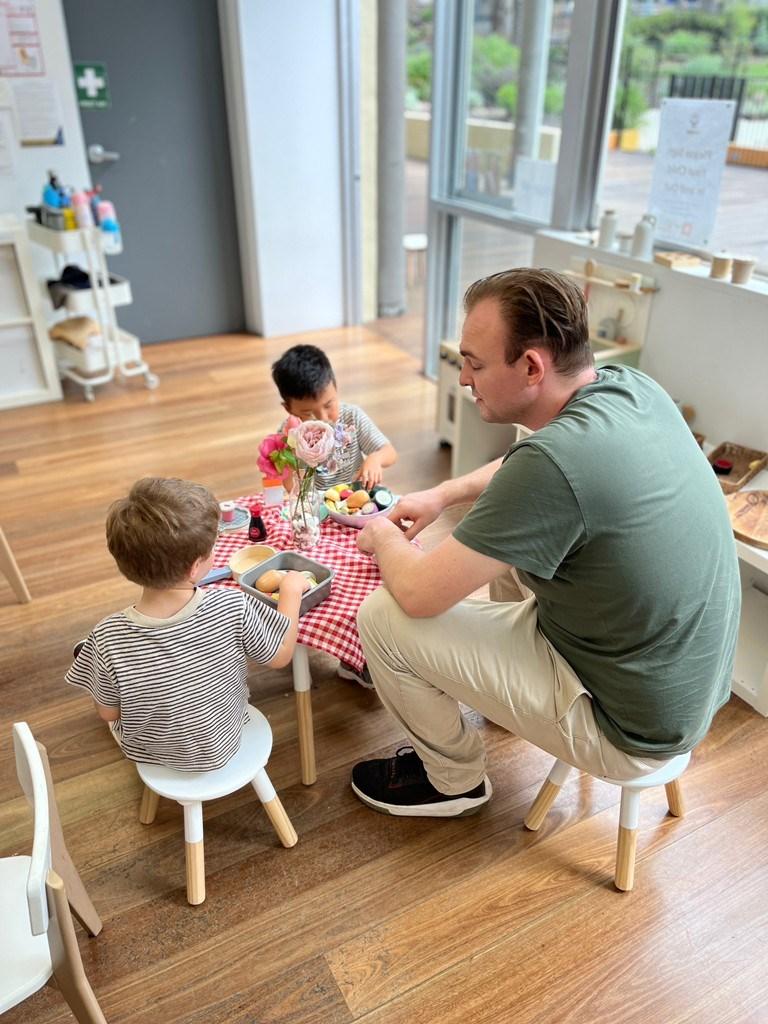


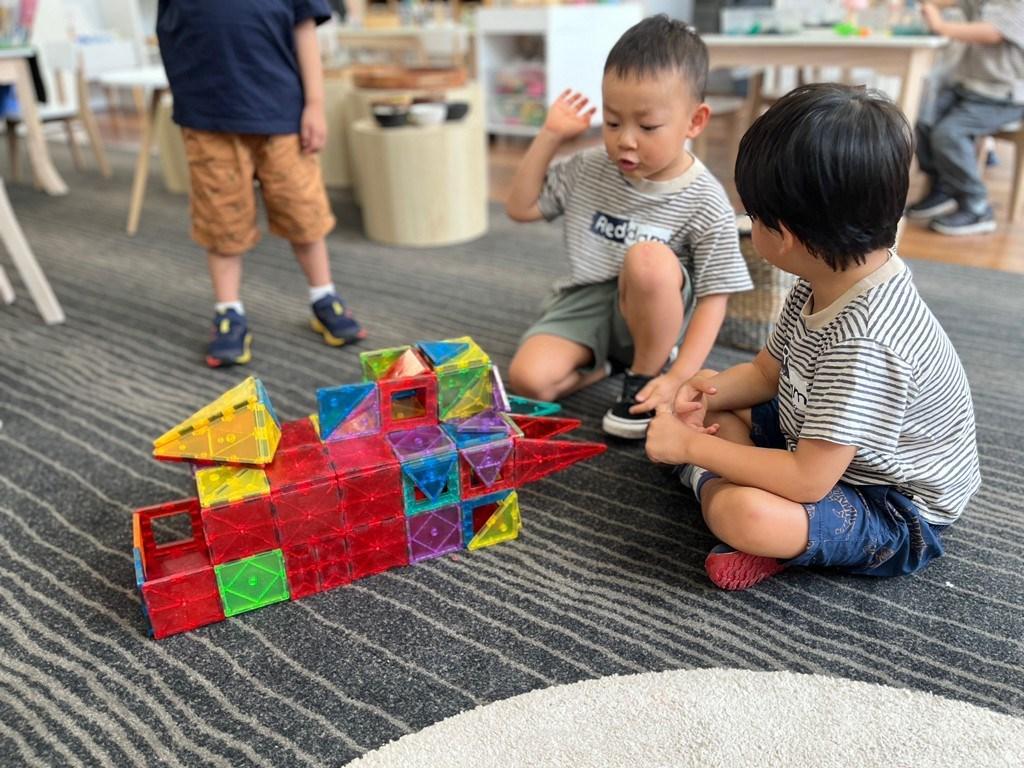

22
Stage 4R:
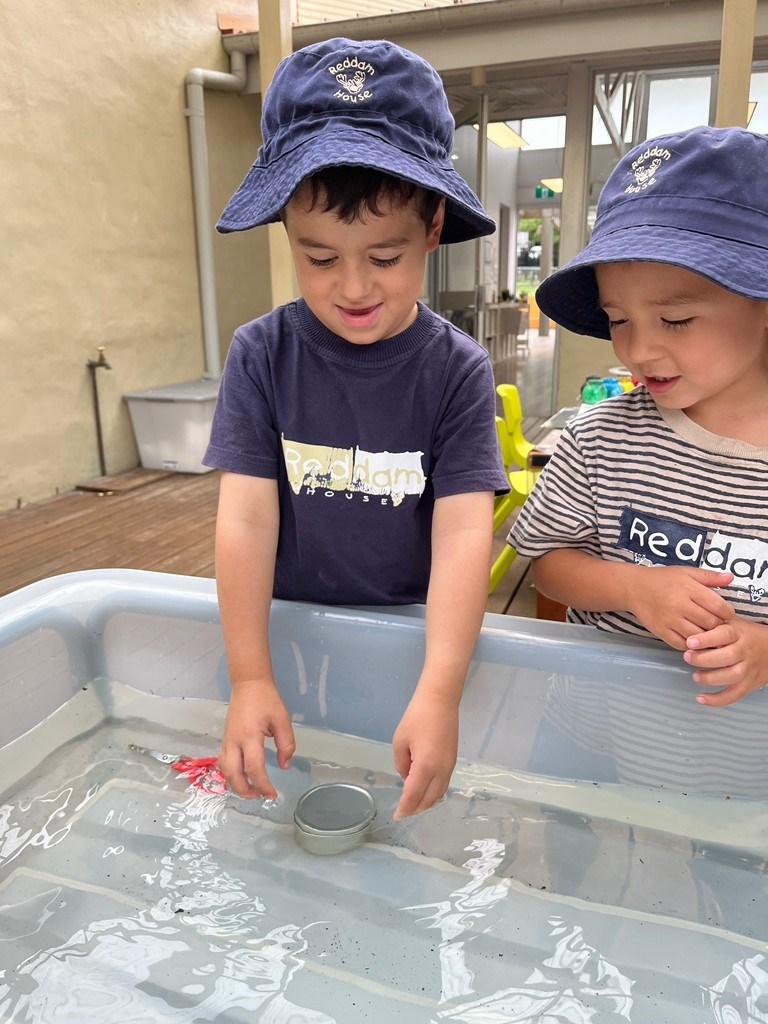
23
By Lauren Hall
“To plant a garden is to believe in tomorrow.”
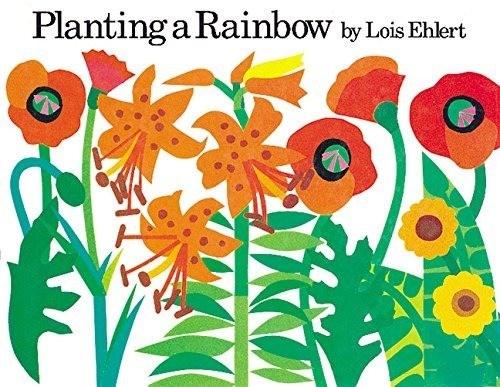 Audrey Hepburn
Audrey Hepburn
Our edible garden continues to grow as the children have taken ownership and responsibility for keeping it alive. However, we got a huge shock at the beginning of the week because someone or something had eaten our new marigold flowers! We assumed that it was the local rabbits who had gnawed off all of the yellow petals and just left the centre and the stem behind. This led to a discussion about how we could protect our veggie patches moving forward.
The children were asked ”What else can we do to keep the bunnies out of the patches?”
“Get some security cameras!” suggested Alexander.
“Build a scarecrow” added Jahangir.
We then got busy transferring our green beans we had germinated and moved the tomato plants over into the same patch. To protect our beans and tomatoes, the children all took turns to scatter some marigold seeds around them. They children commented about how the seeds looked more like hairs, rather than round seeds. Marigolds are a companion plant which attract insects so they don’t eat the fruits and vegetables. We just hope the rabbits don’t get to the marigolds first. Over in our first patch, we noticed that our root vegetables carrots and beetroots, had sprouted above the soil. There was an empty space next to them for some radishes. We made another line in the soil and placed the radish seeds inside. These seeds were bright blue and we wondered how they could possibly turn into a radish? We will just have to wait and see. In our fourth patch we also planted some corn, broccoli and cauliflower seeds next to our strawberry plant. Our edible garden is now complete and now we just wait for seeds to sprout and grow.
As we patiently wait for our herbs and vegetables to grow, we have started investigating how fresh produce is grown on farms. We read Yum, Yum! Where Does It Come From? By Cathie and Emily Colless. We learnt how wheat is grown in large crops before it’s milled into flour, how cows produce milk to make dairy products, and that chickens, ducks and geese all lay eggs. Some farms have large orchards with rows of fruit trees, while others only grow vegetables that they specialise in. There are all sorts of farms from dairy farms, to strawberry farms. After exploring the concept of farming, the children have started to appreciate how hard our farmers work to grow and produce our fresh food at the supermarket. They have also realised how long it’s going to take for our own vegetables to grow in our garden. It all takes time, hard work and patience. The children have been fascinated with how flour is milled from wheat, so we decided to try our bread recipe again. Some of our herbs are flourishing so we picked some herbs from our edible garden and we created two different loaves of bread this week. Our first loaf featured our original flavour of rosemary and thyme, while the other was covered in cherry tomatoes with some garlic, oregano, basil and parmesan cheese. We also improved our recipe by adding an extra 500g of flour and an extra packet of yeast, so that our loaves would be thicker and fluffier. This was definitely a good decision because our bread was extremely delicious. What will bake with flour next? During the week, the children continued their interest with plants by exploring some lilly pilly fruits that were growing on a bush. The children opened the fruits to reveal what was inside, before placing them on wet towels to attempt to germinate them. The children’s prenumeracy skills were also supported during a measuring experience. Using connector blocks, rulers and string, the children were introduced to the concept of measurement as they determined how tall our variety of classroom plants were. We measured our sunflowers and plant shoots and determined which ones were the tallest and shortest. Next week our interest in fresh produce will be extended as we start to learn about The Five Food Groups.
24
–
Lauren, Rowel and Rebecca
Stage 4E


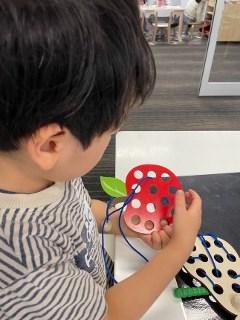


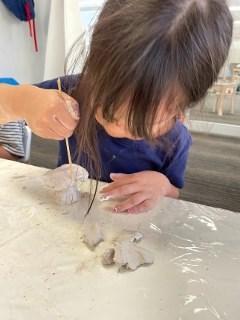
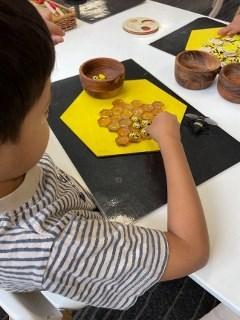

25
Stage 4E:
Stage 4E:
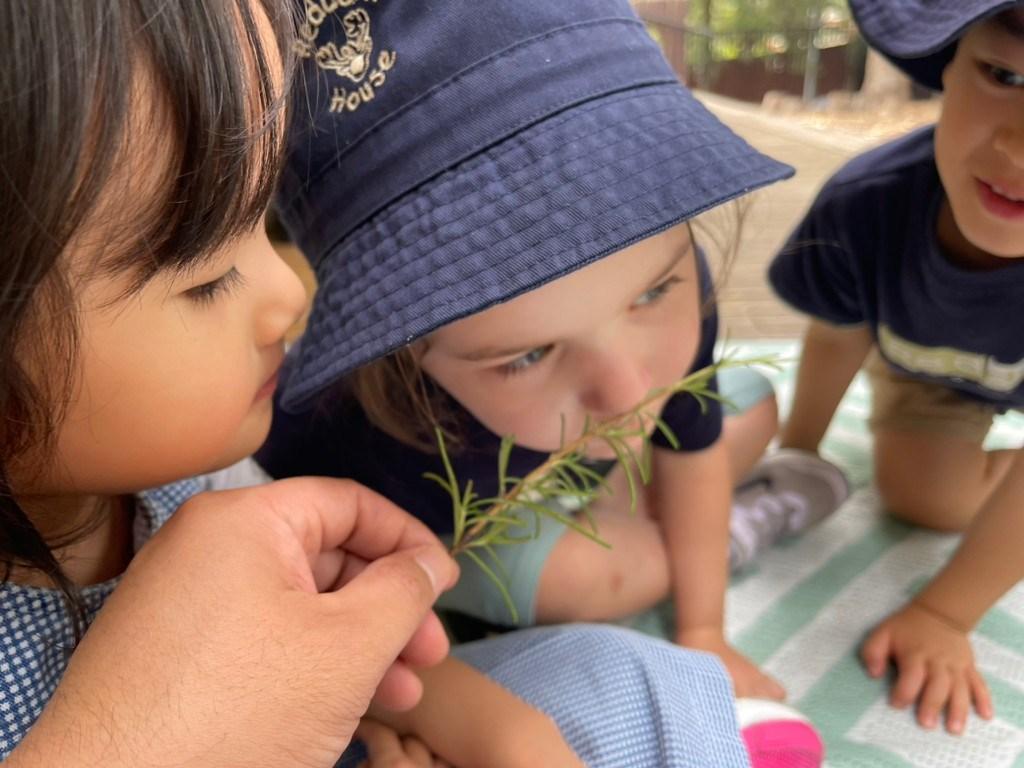
26













































































 Audrey Hepburn
Audrey Hepburn








